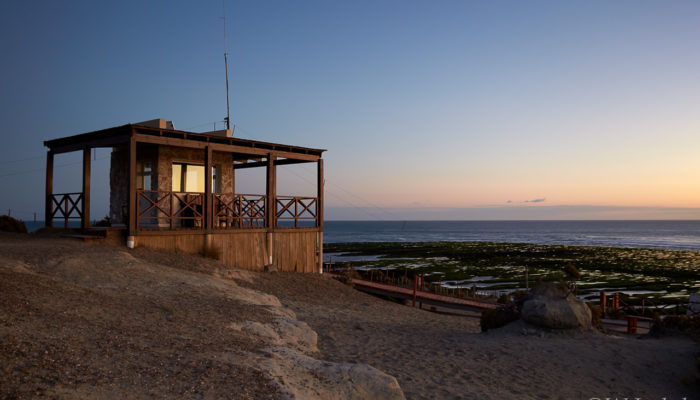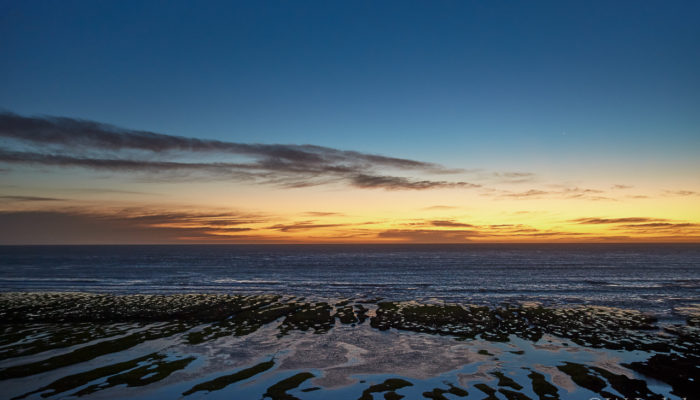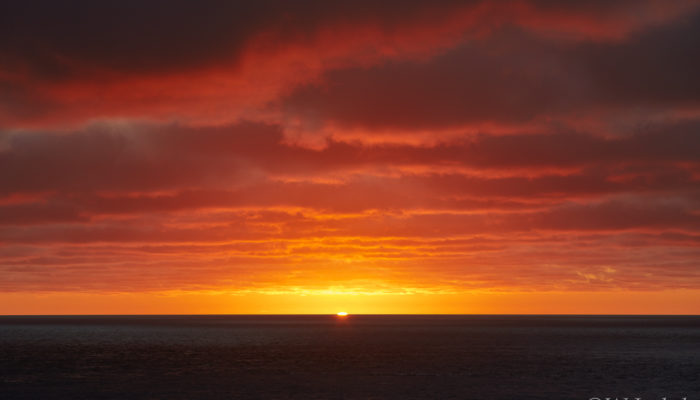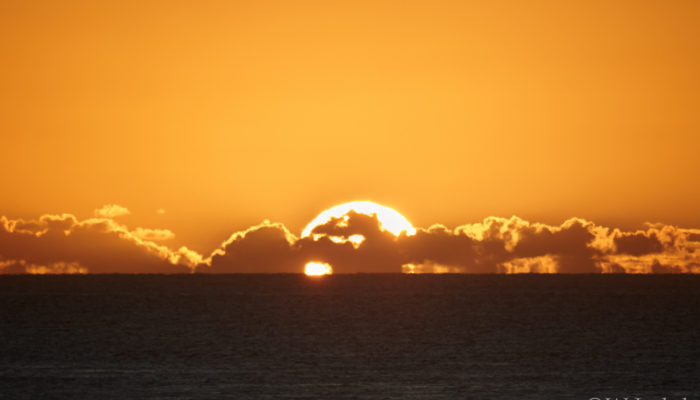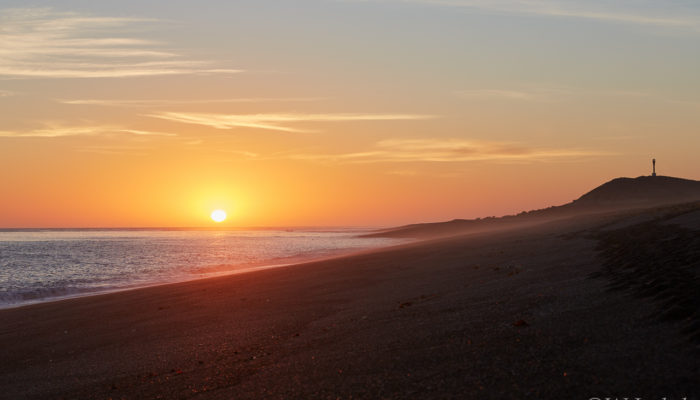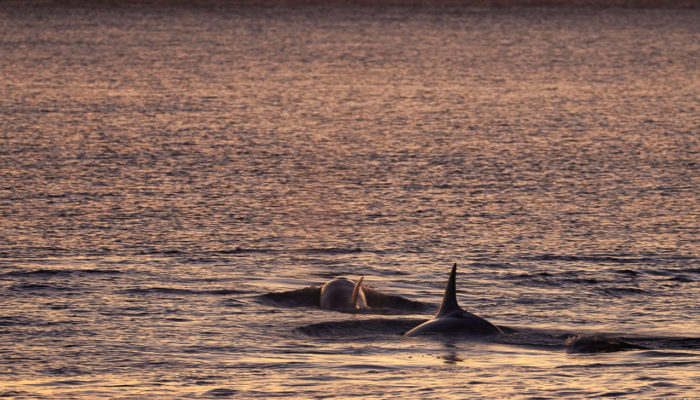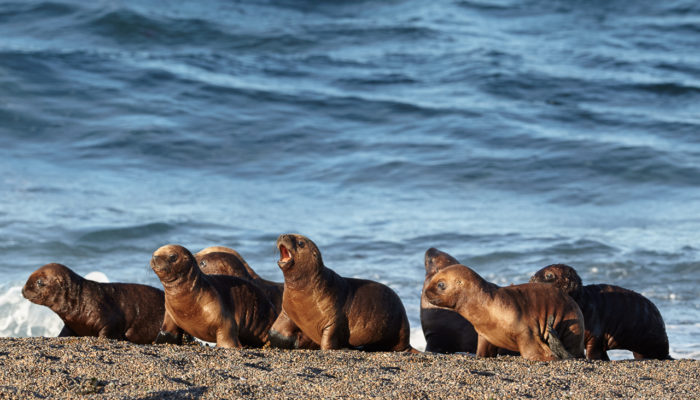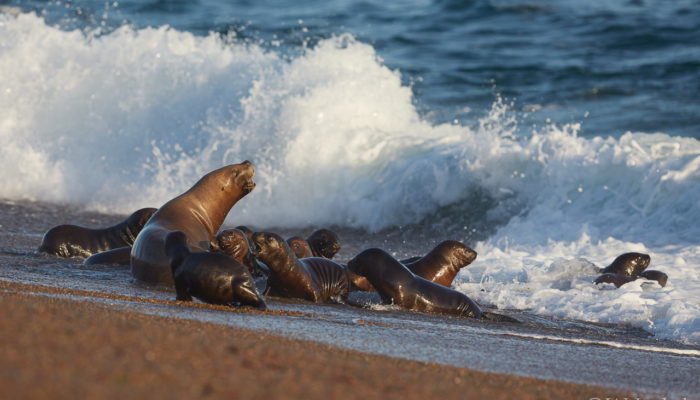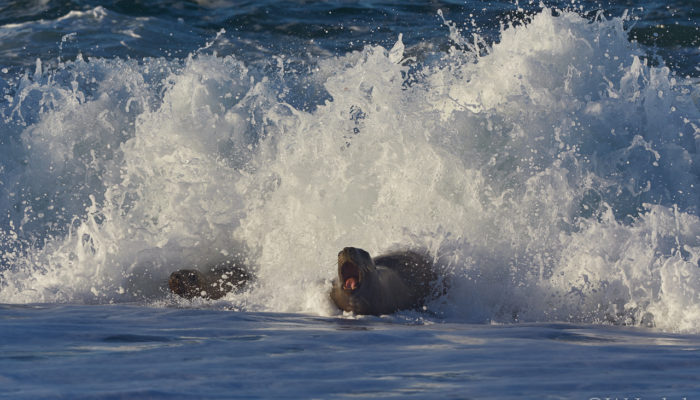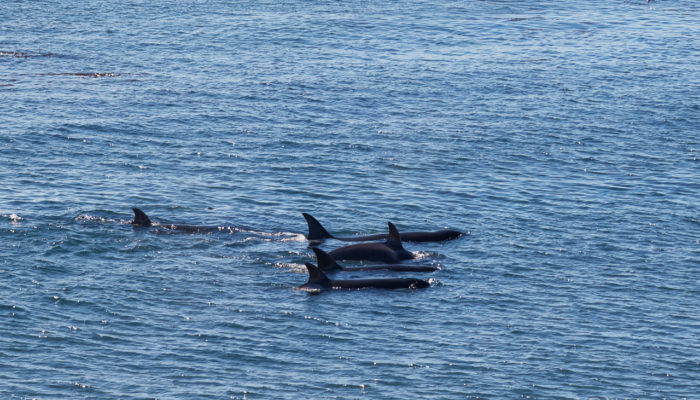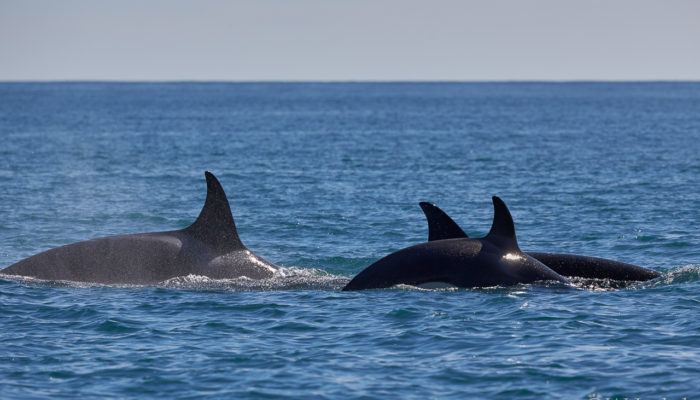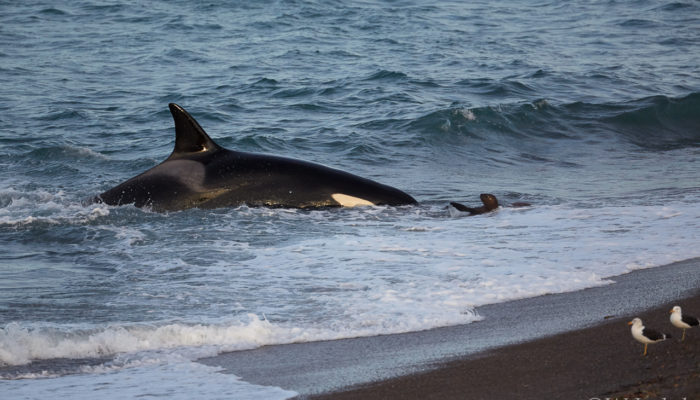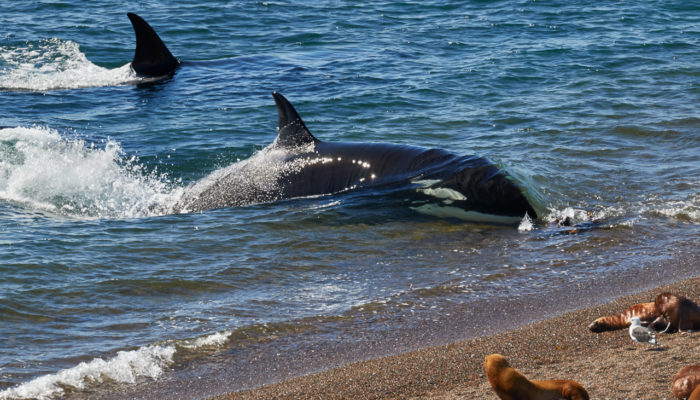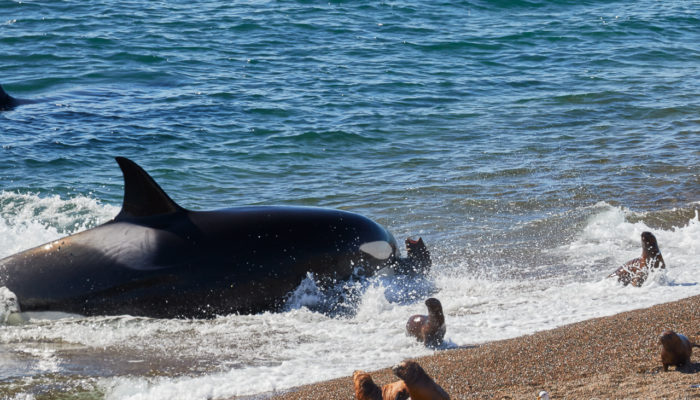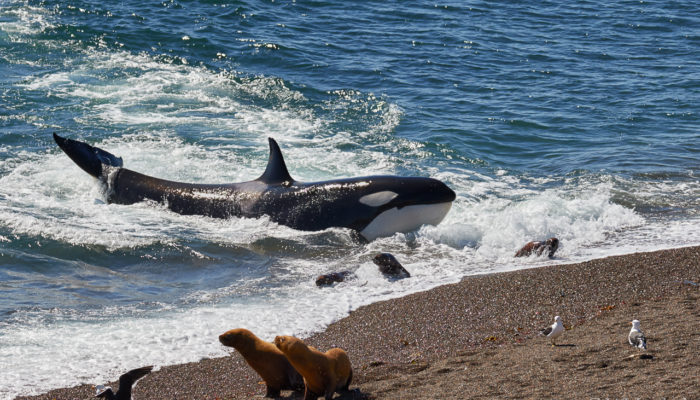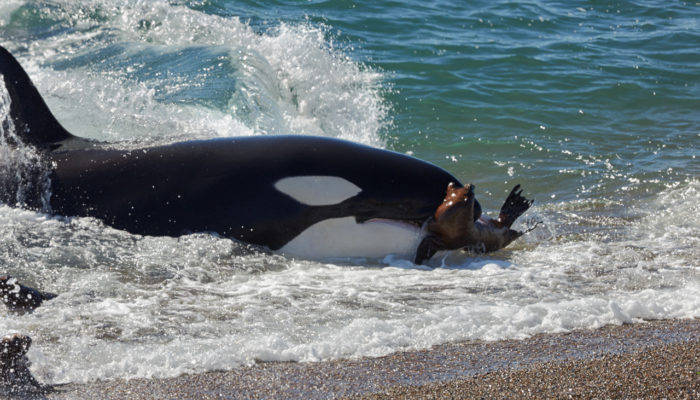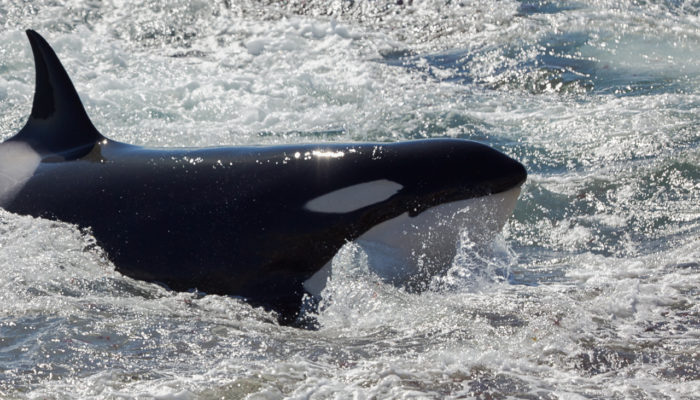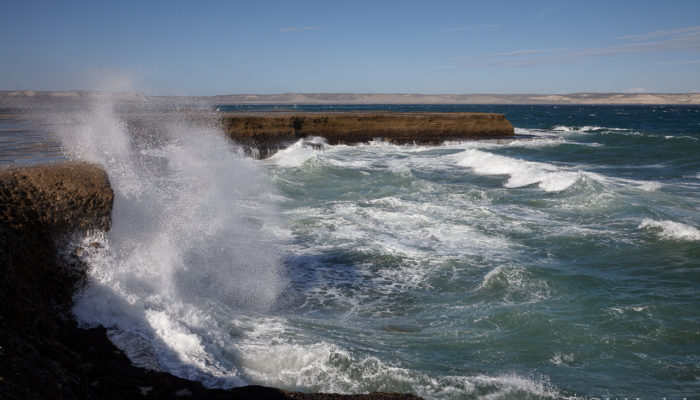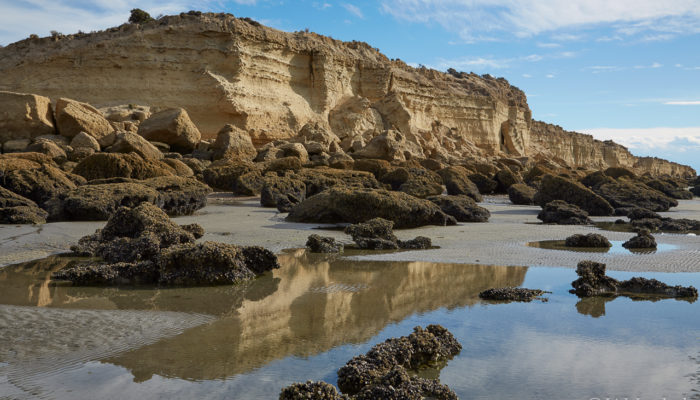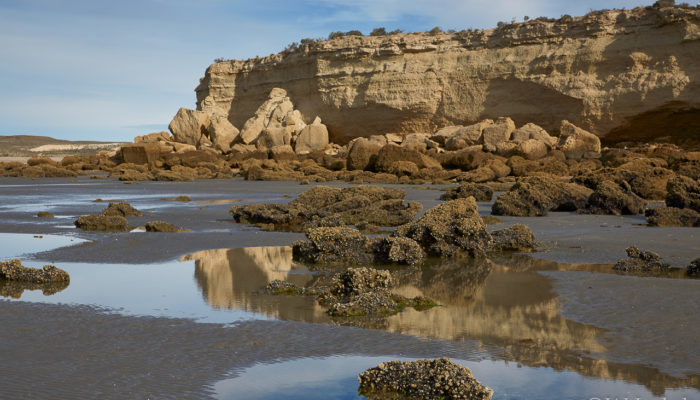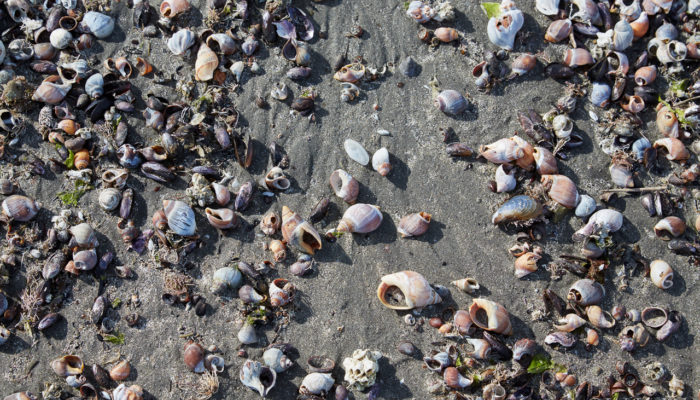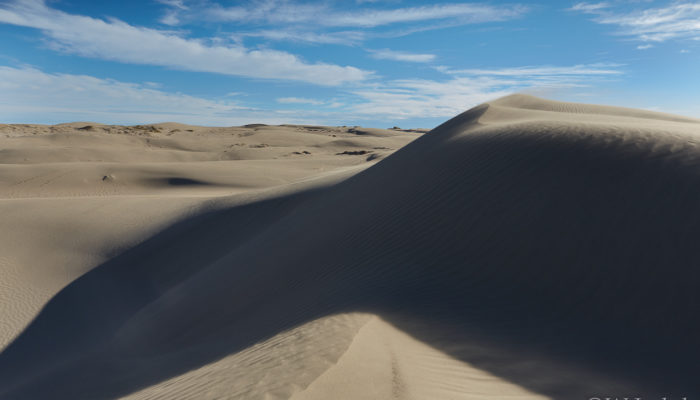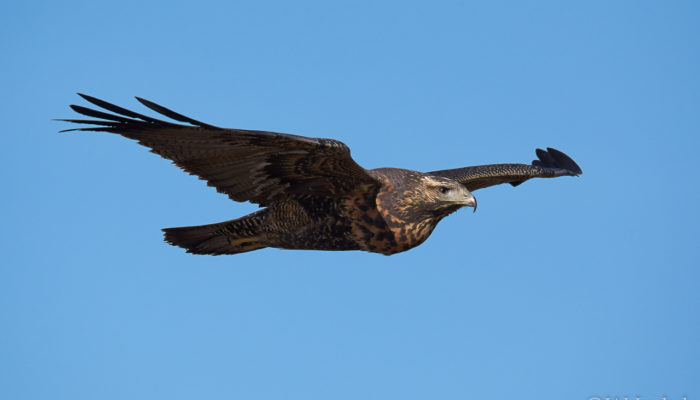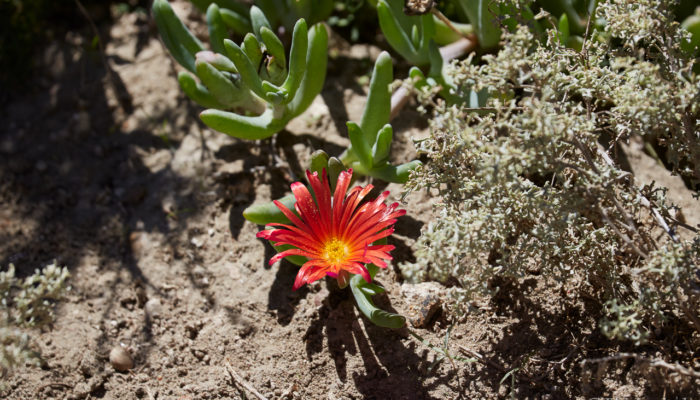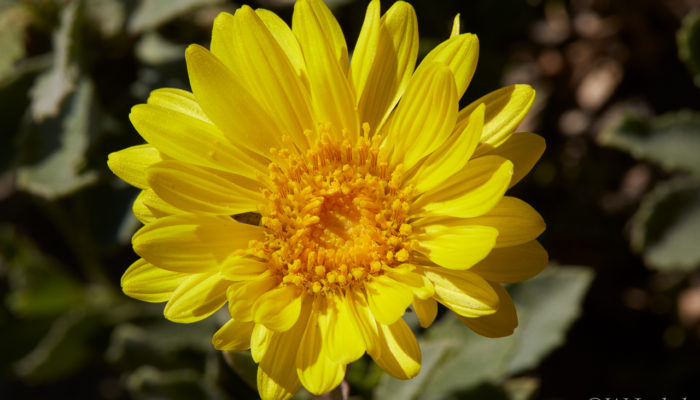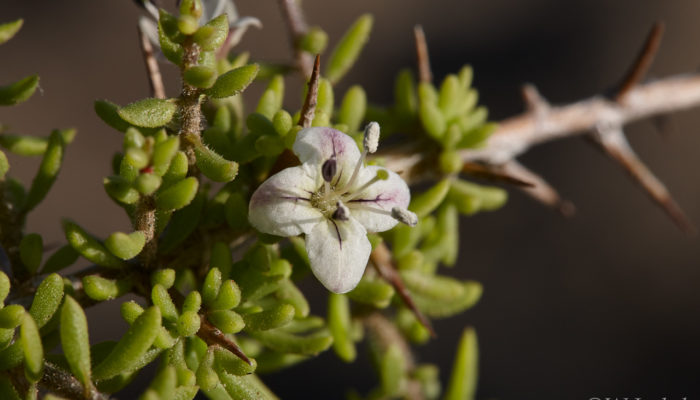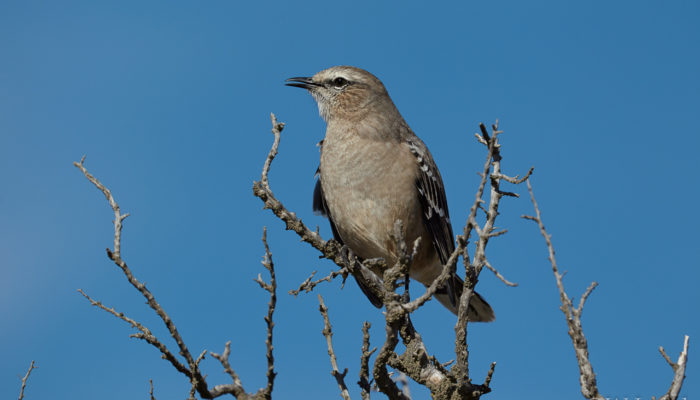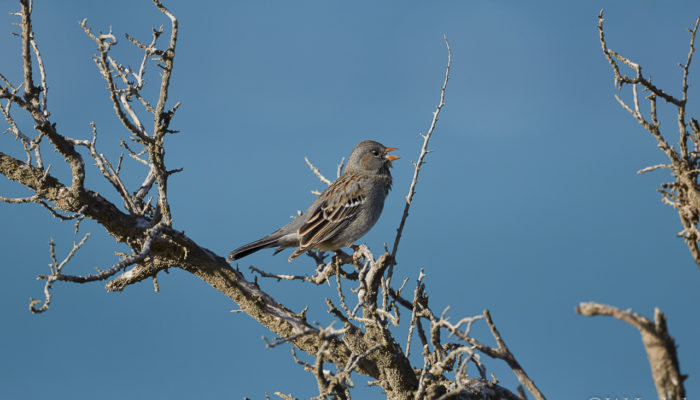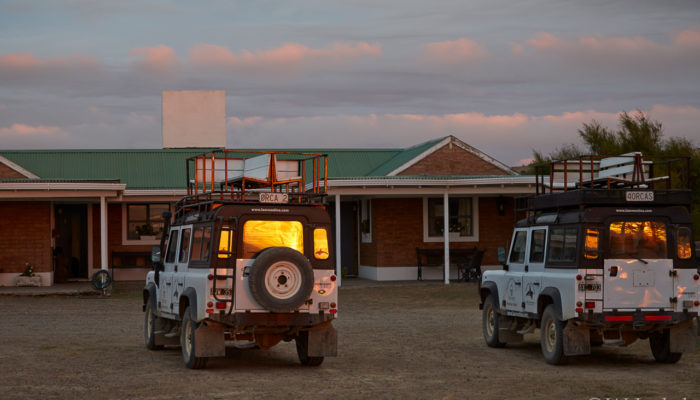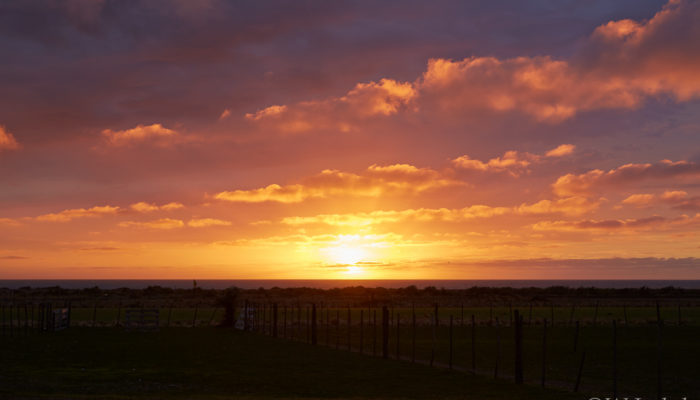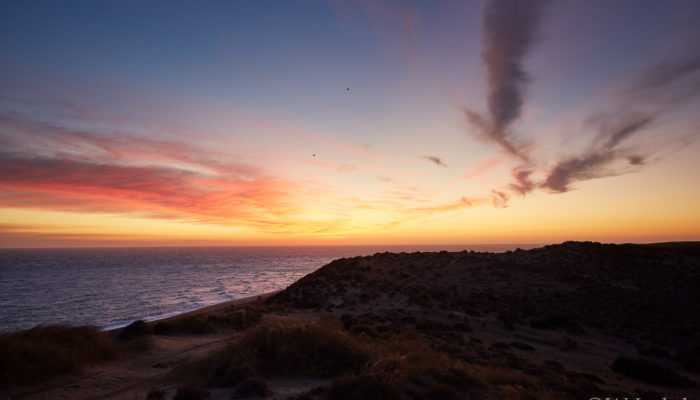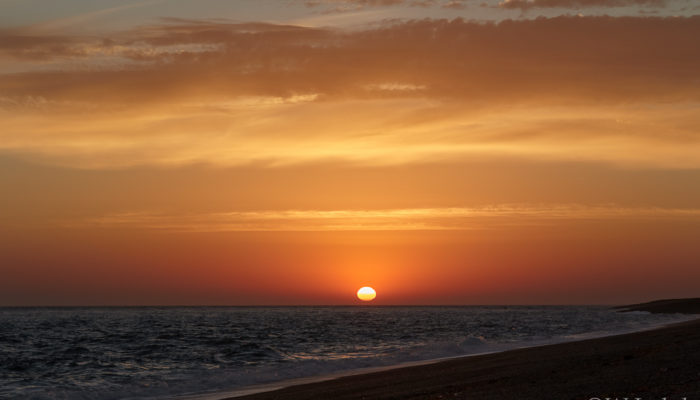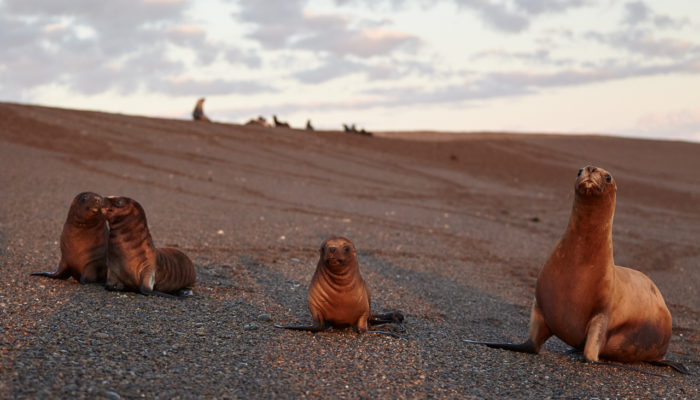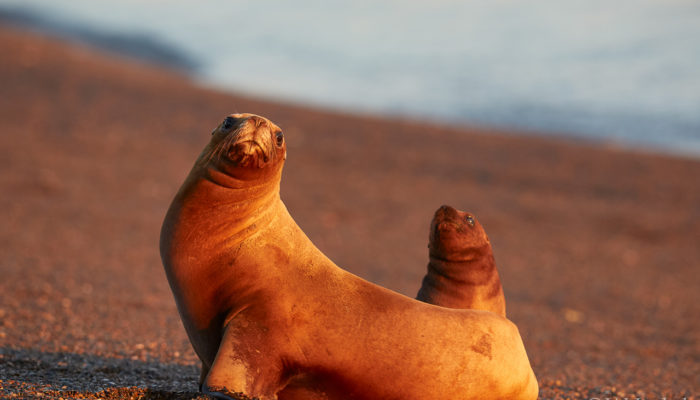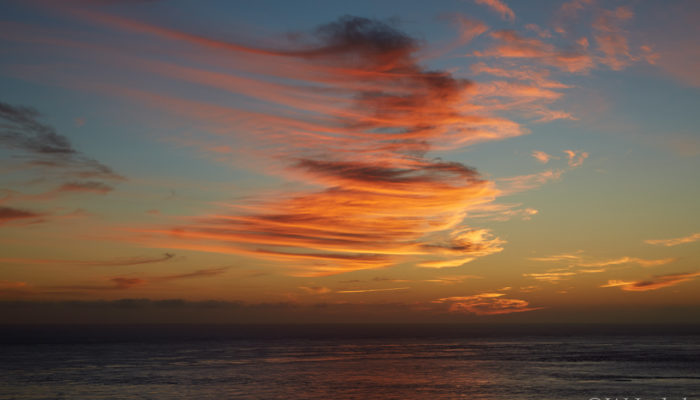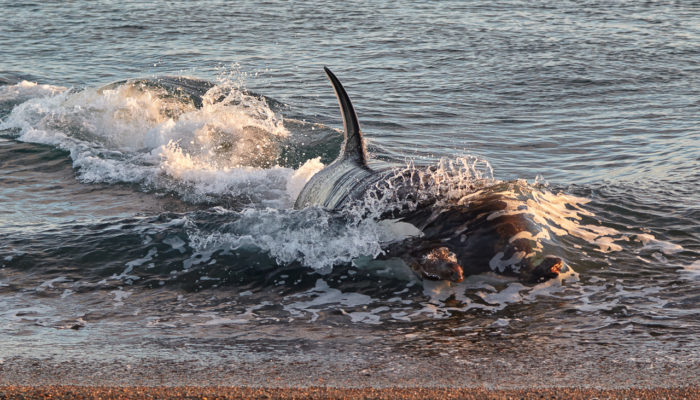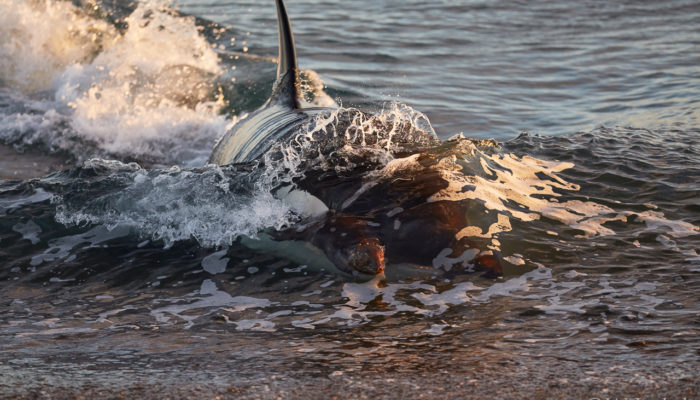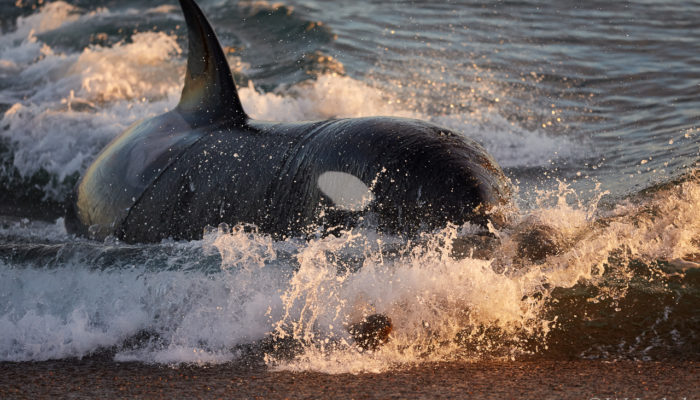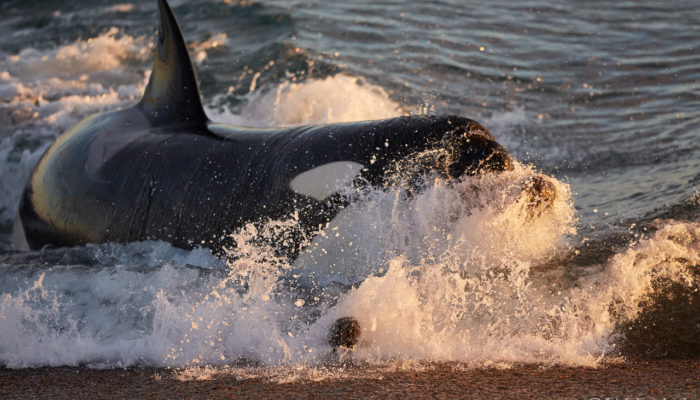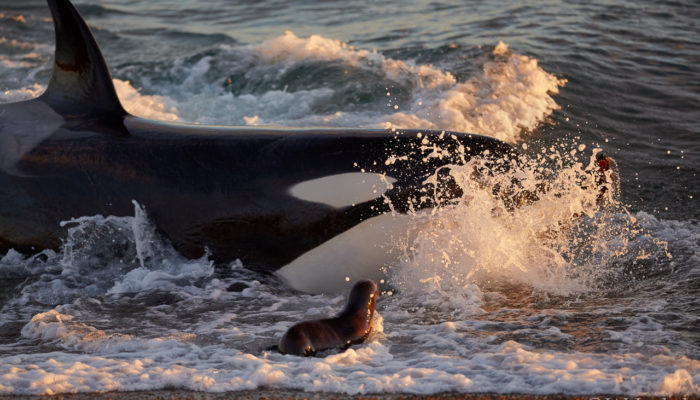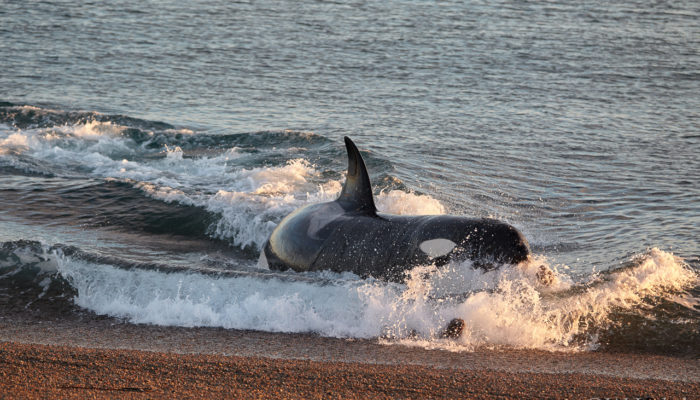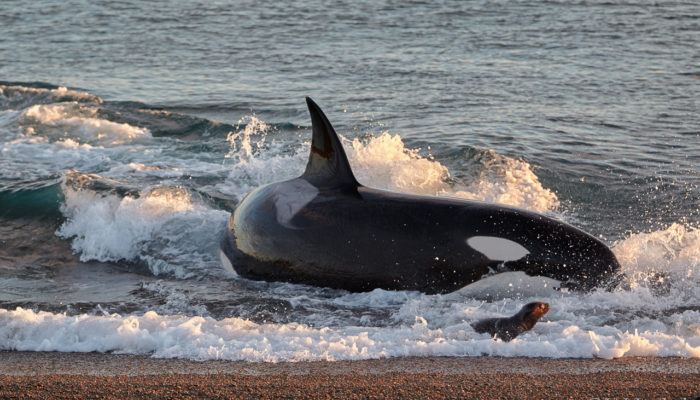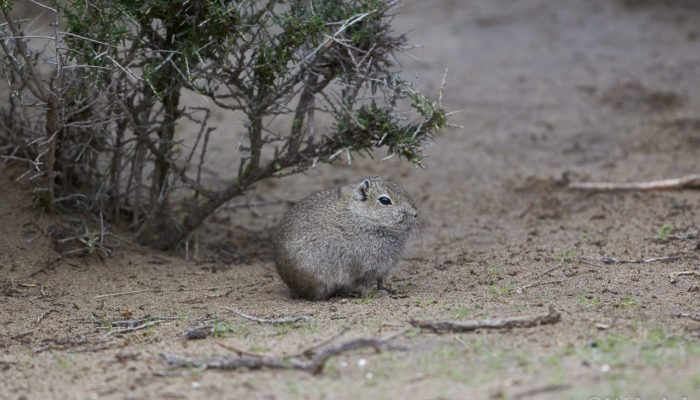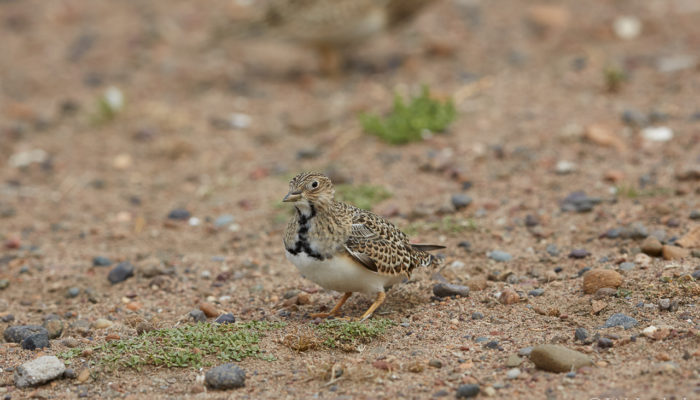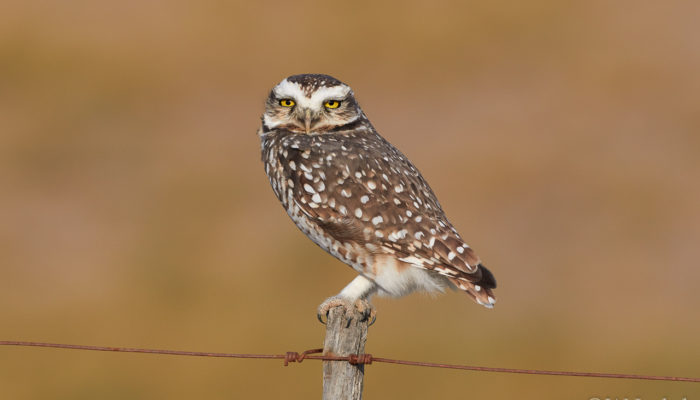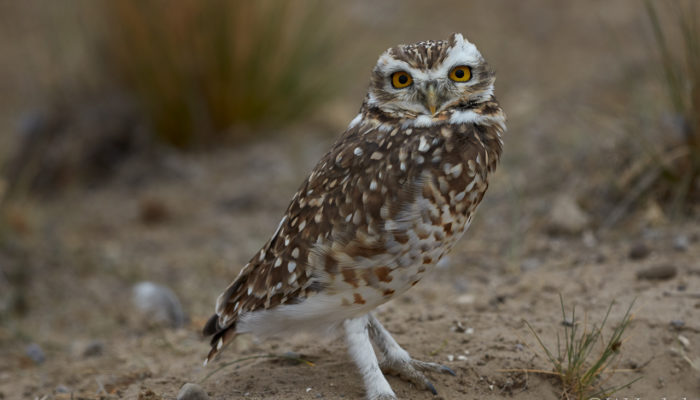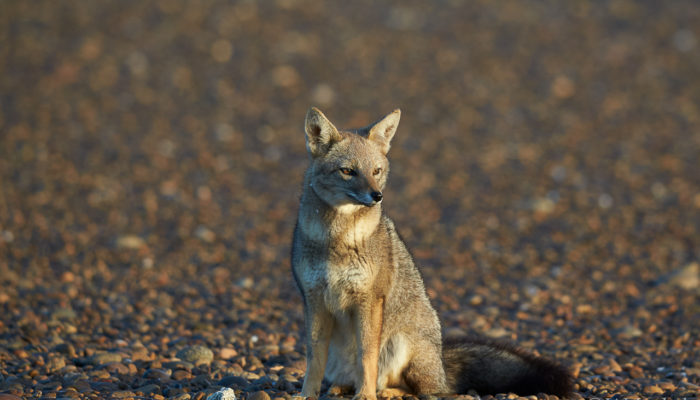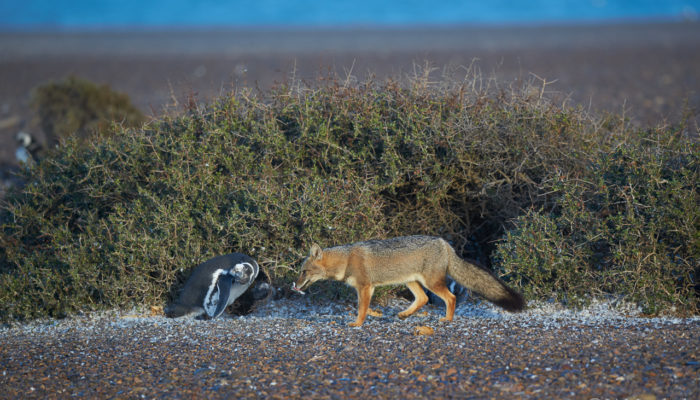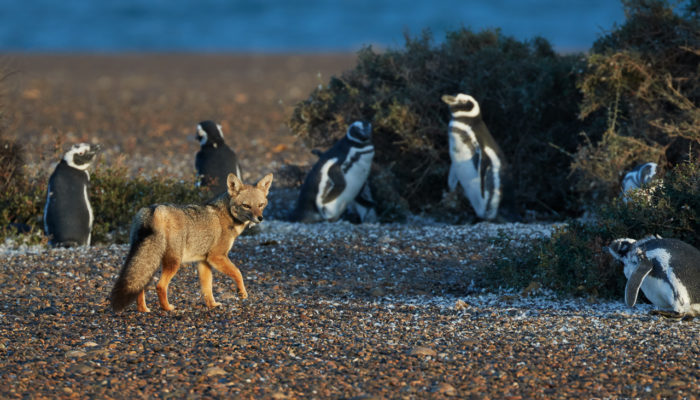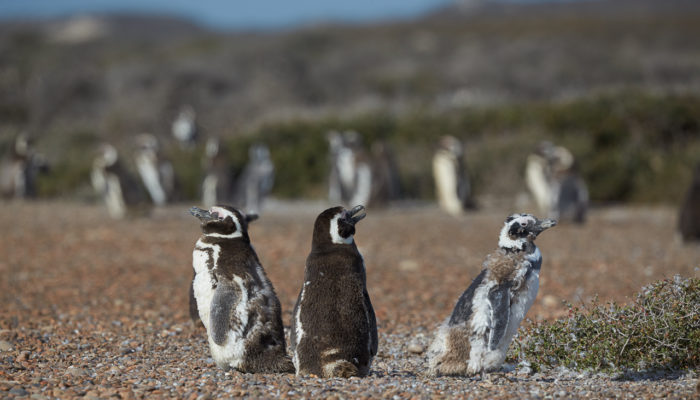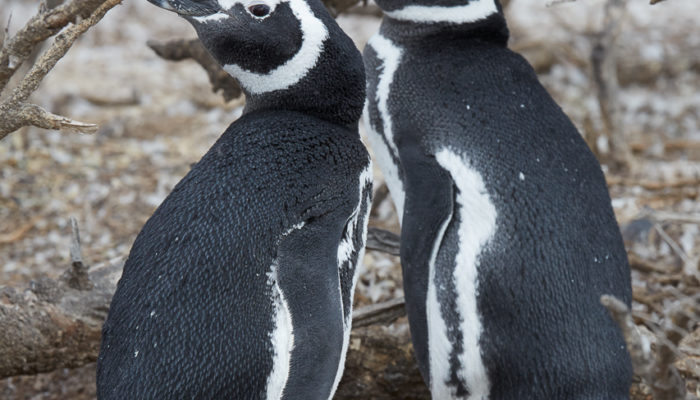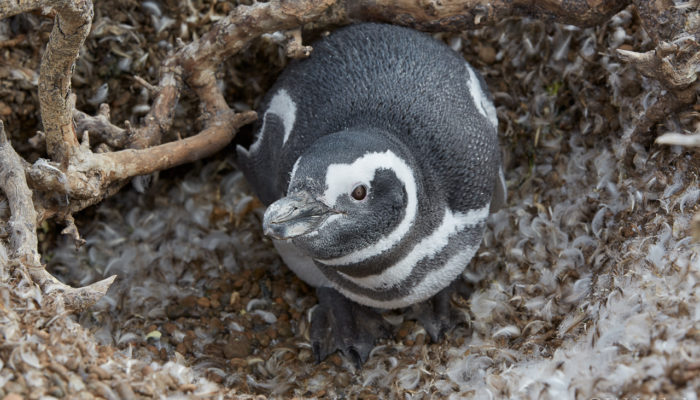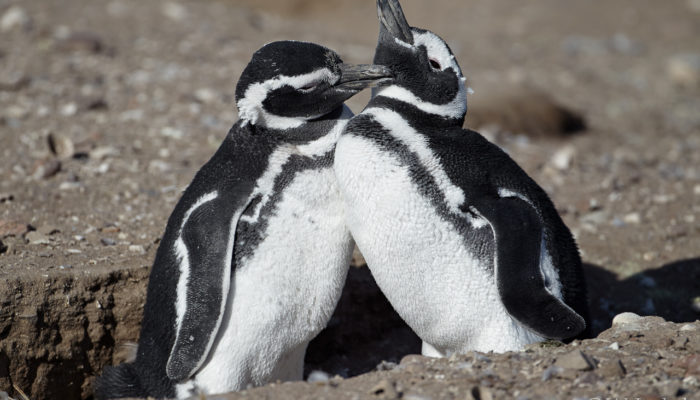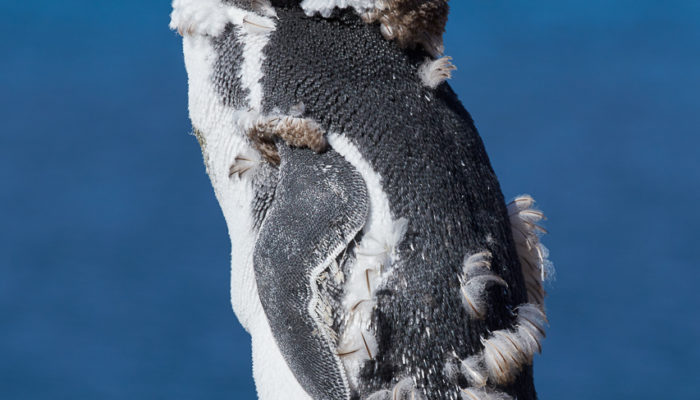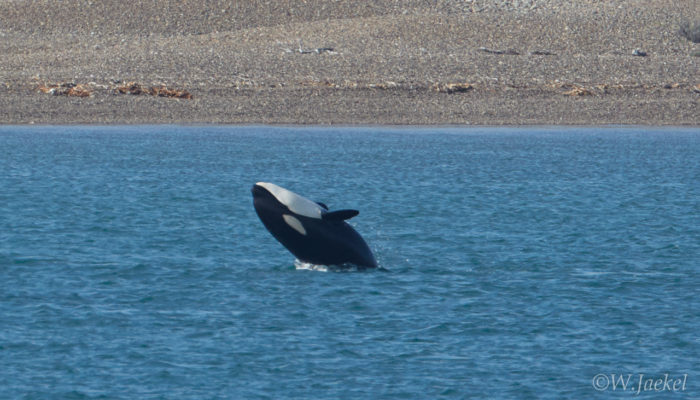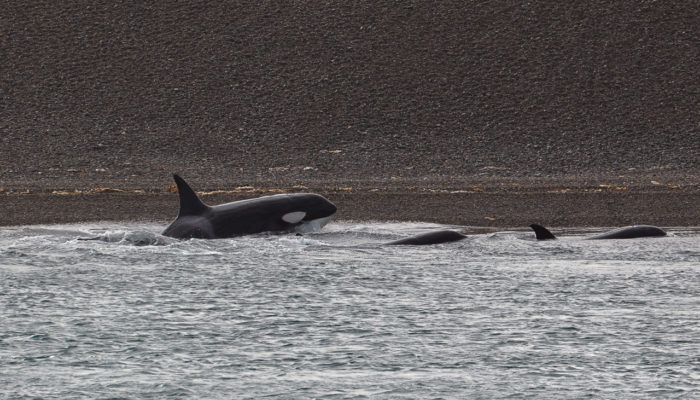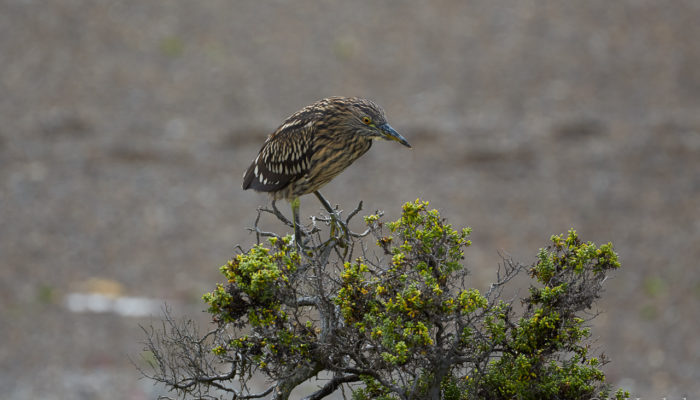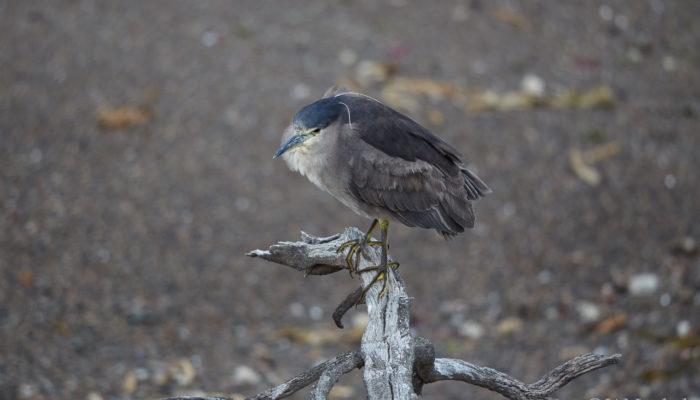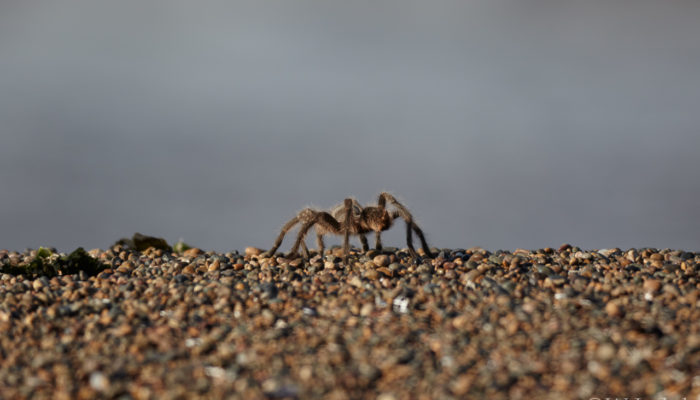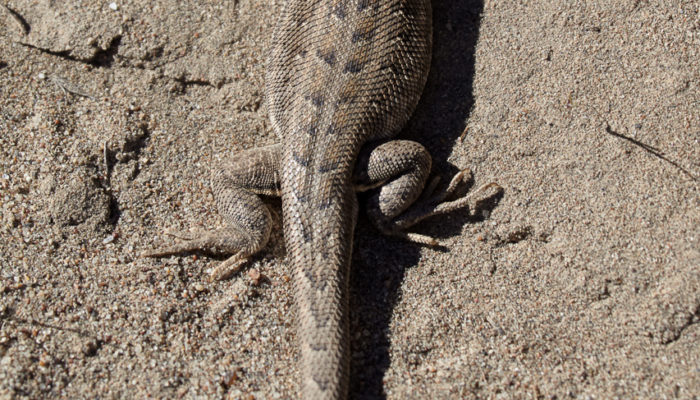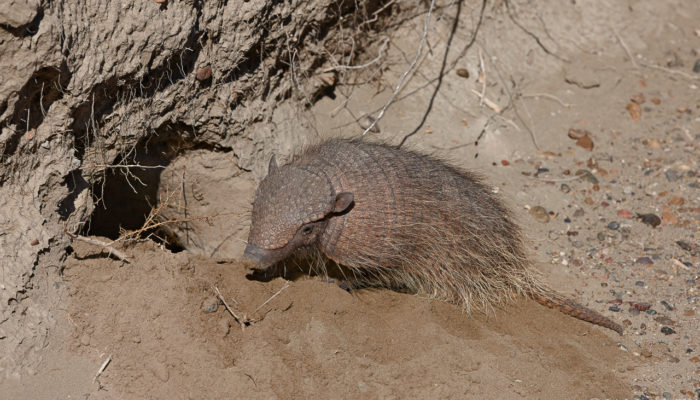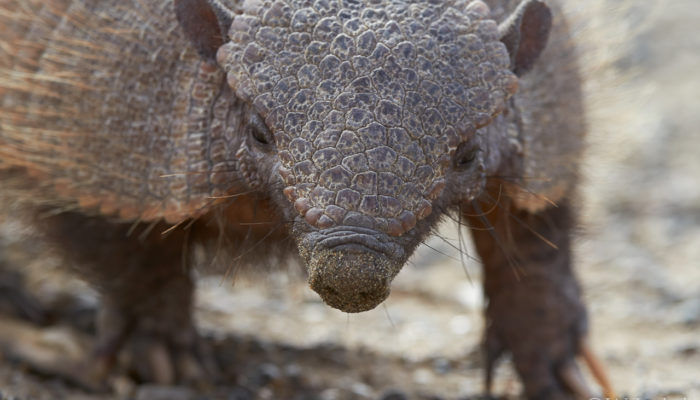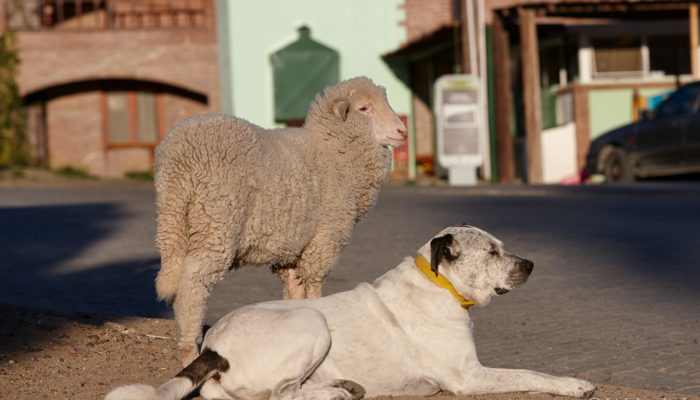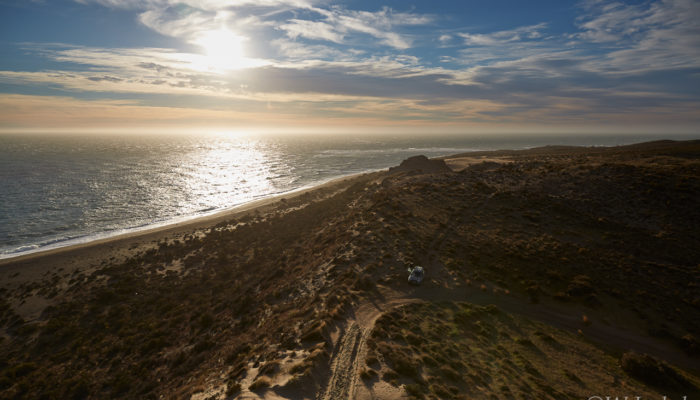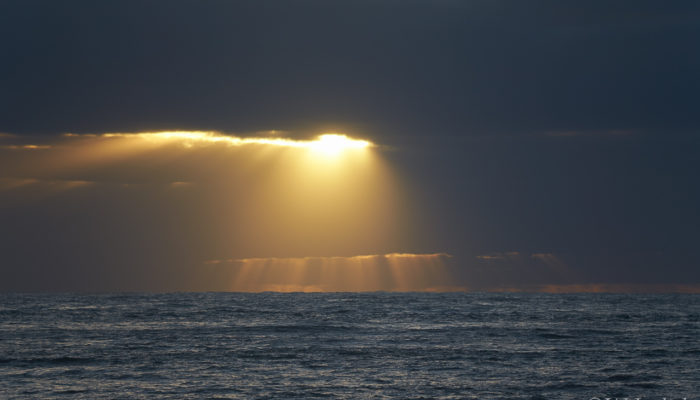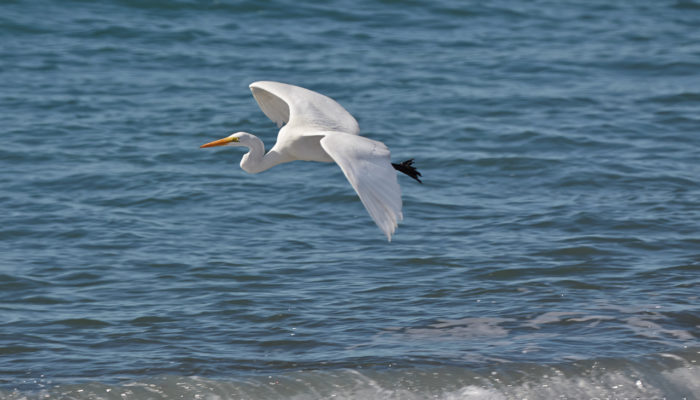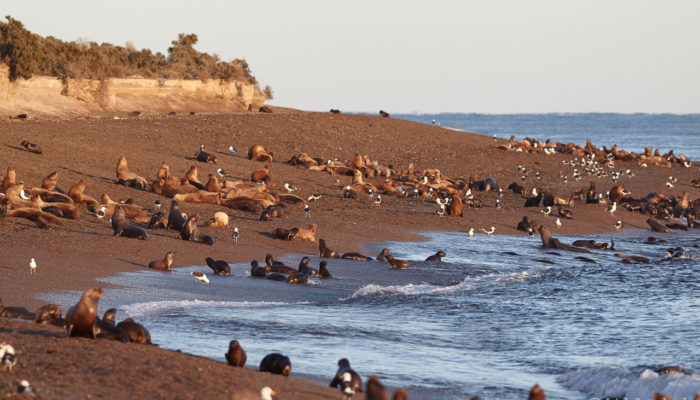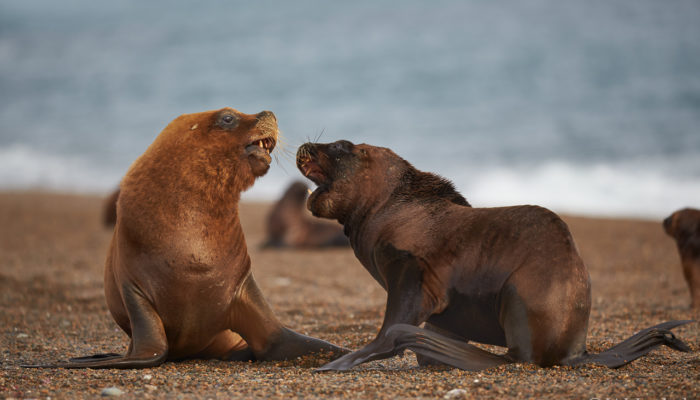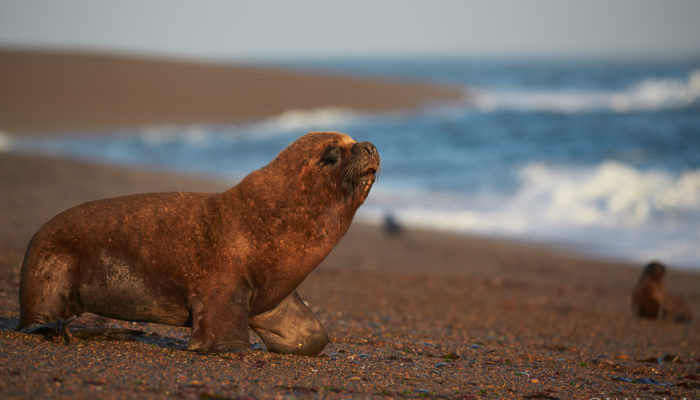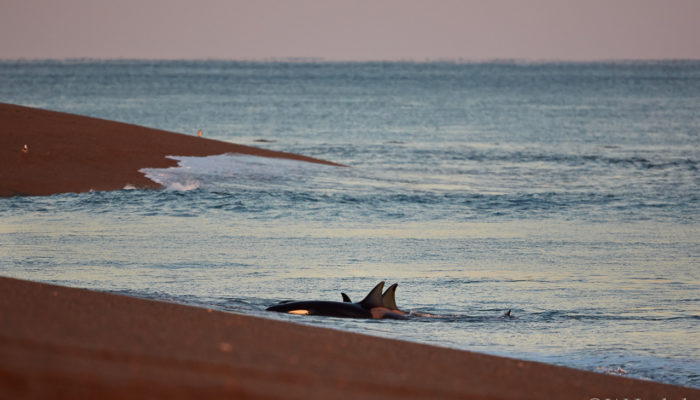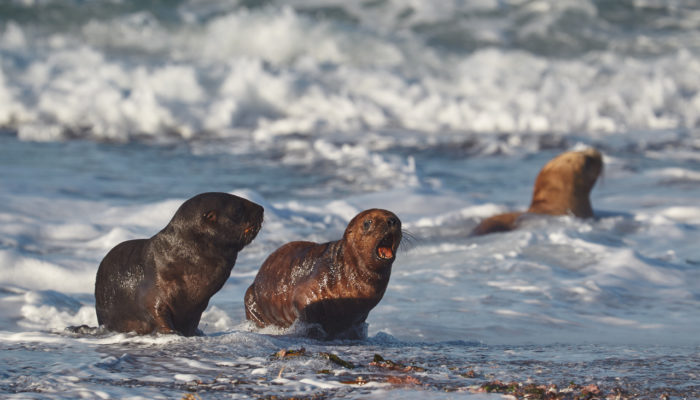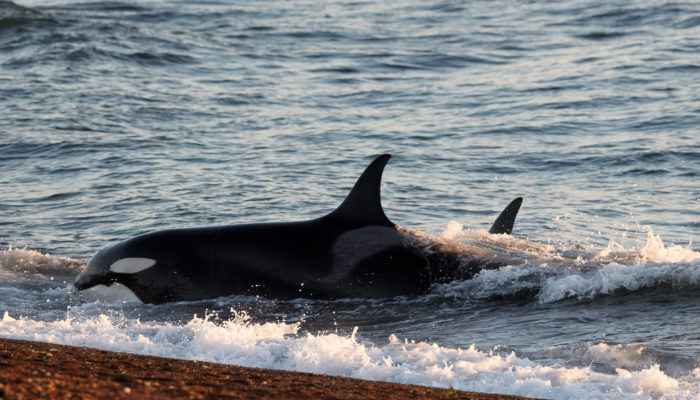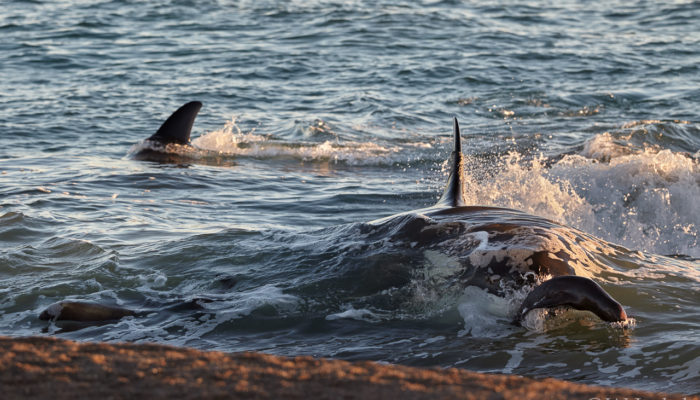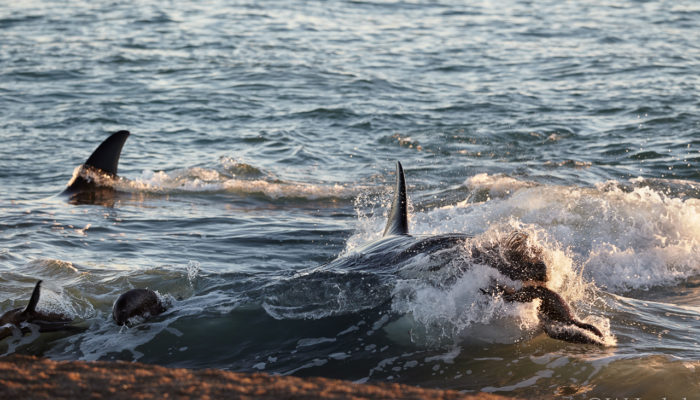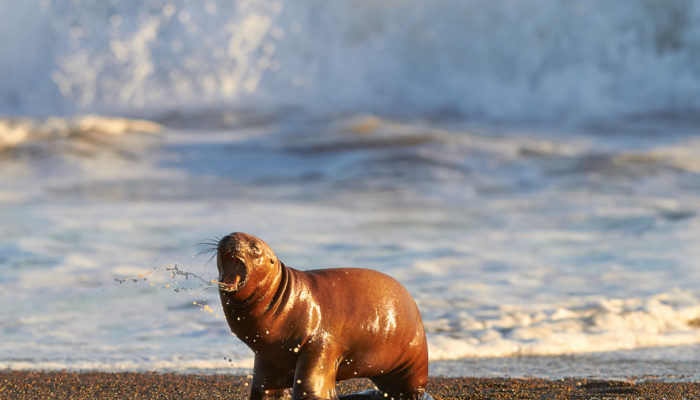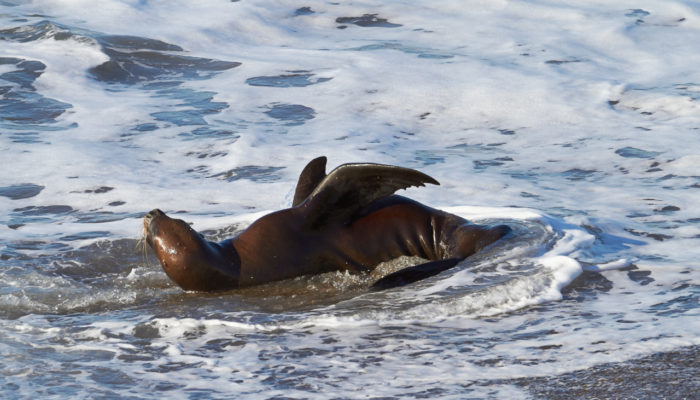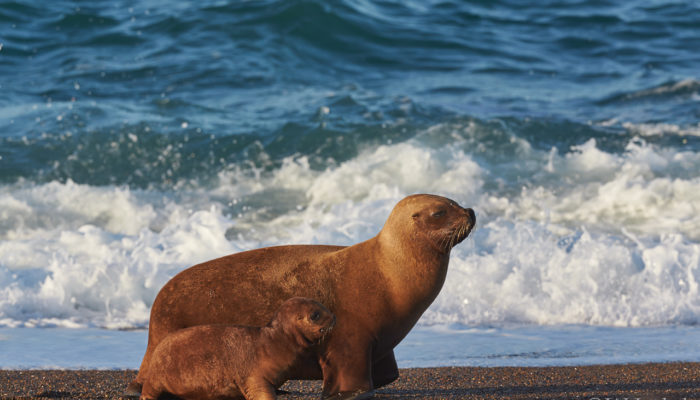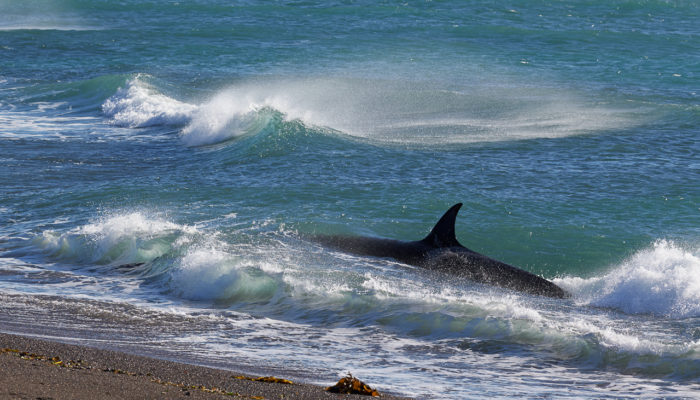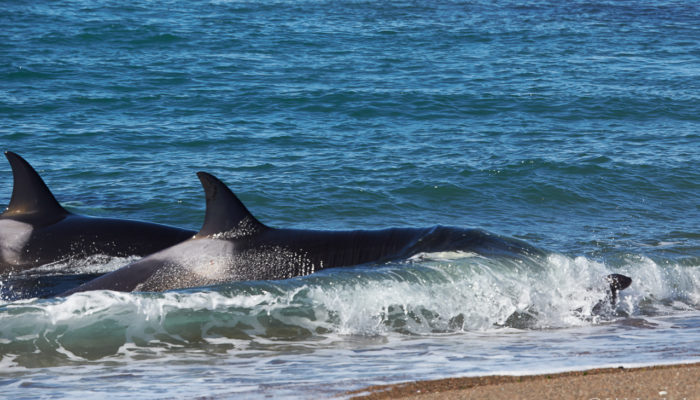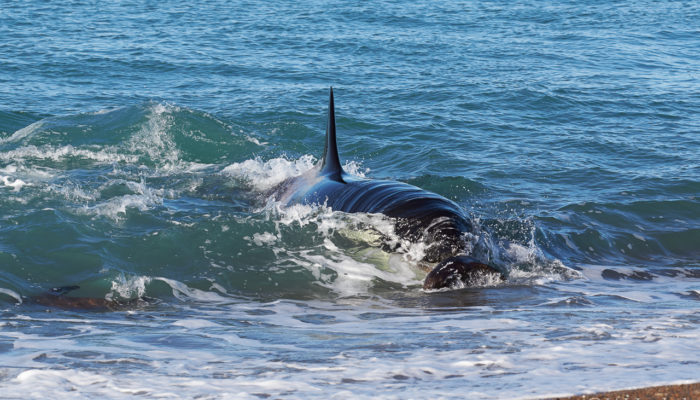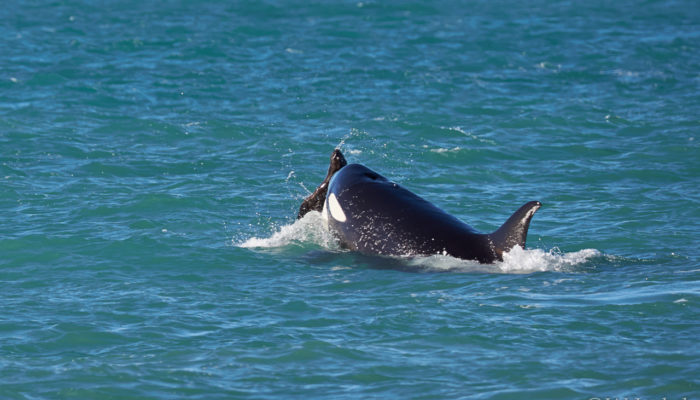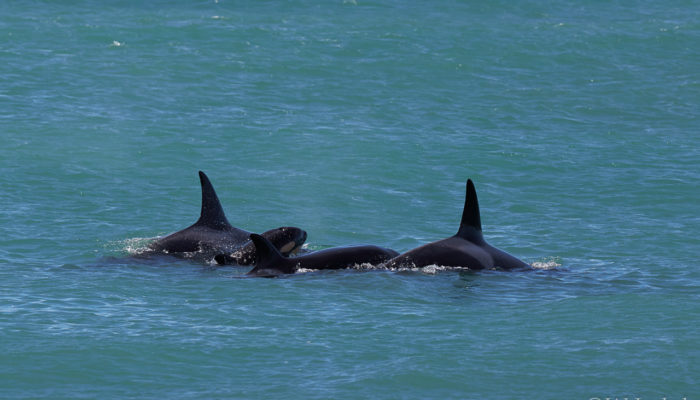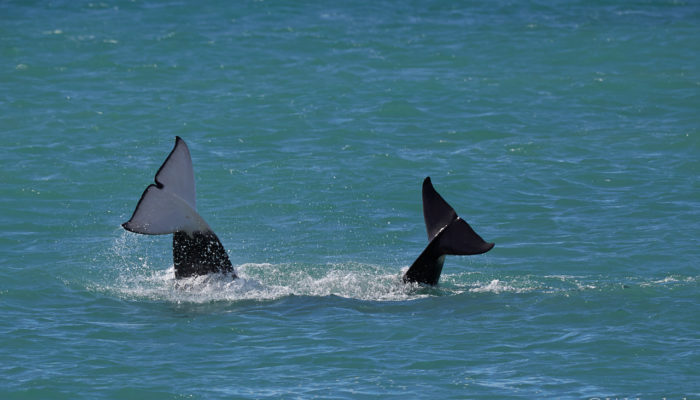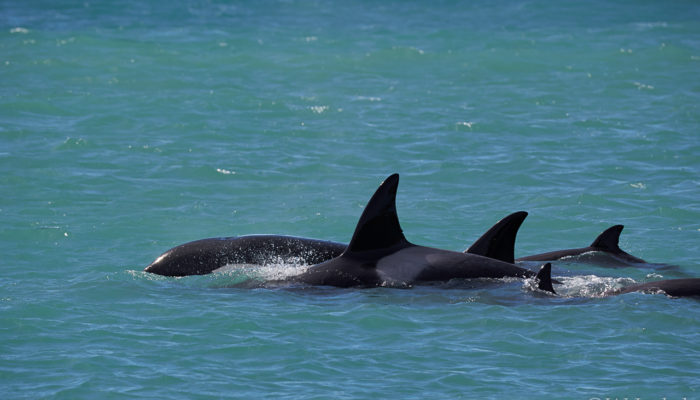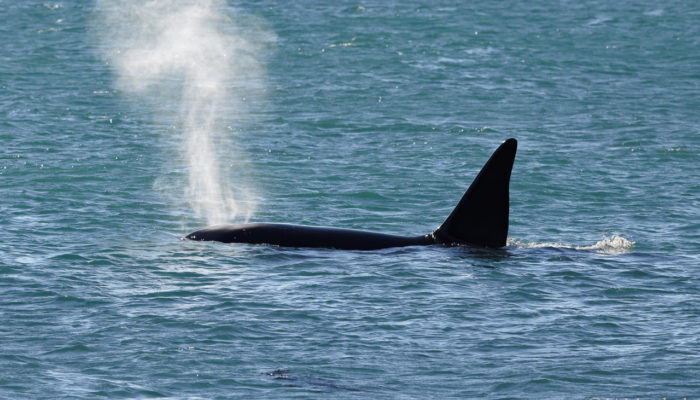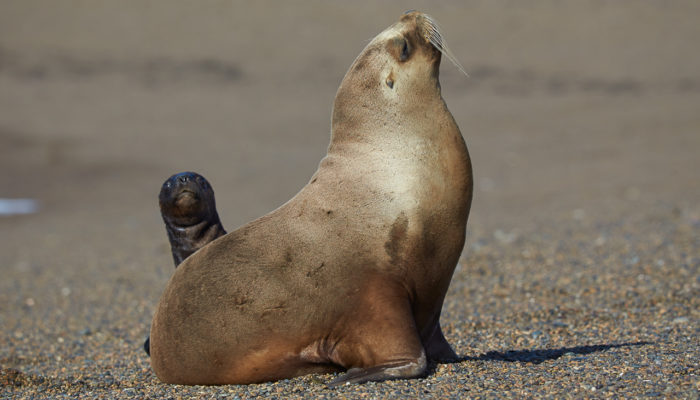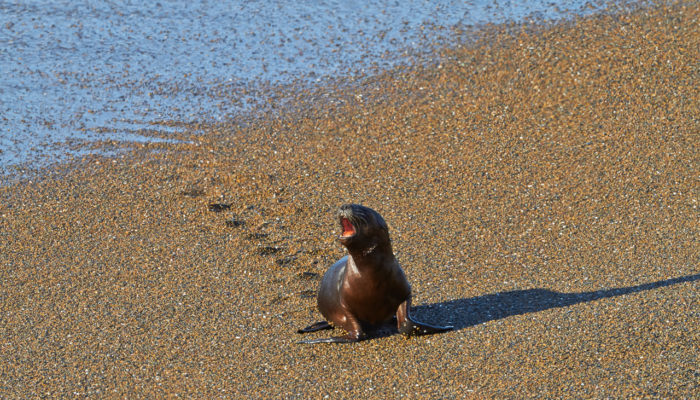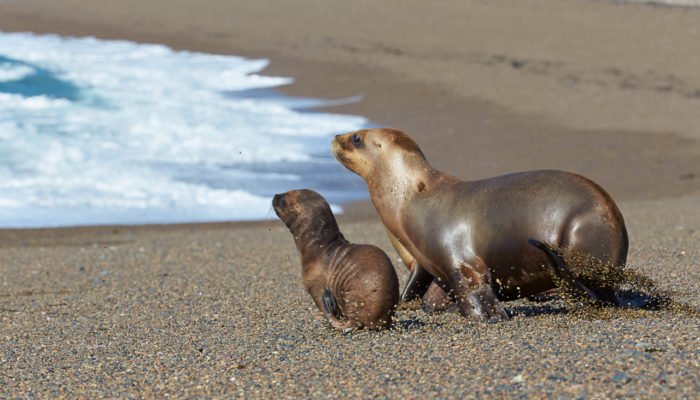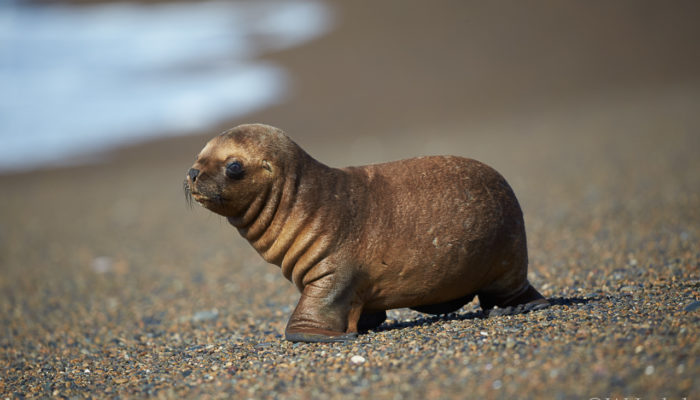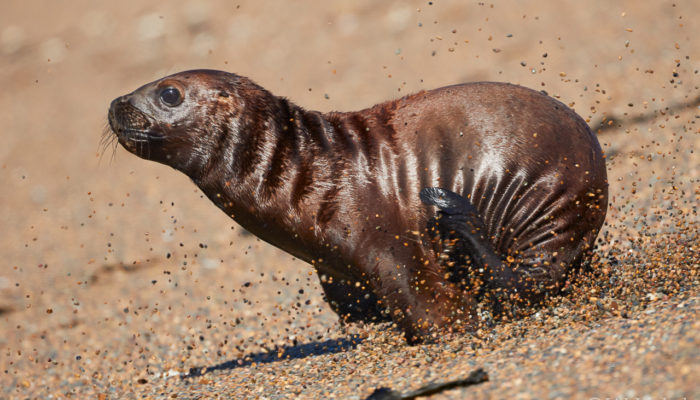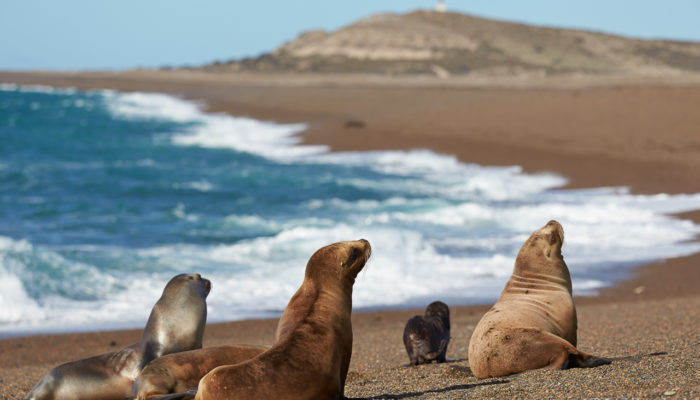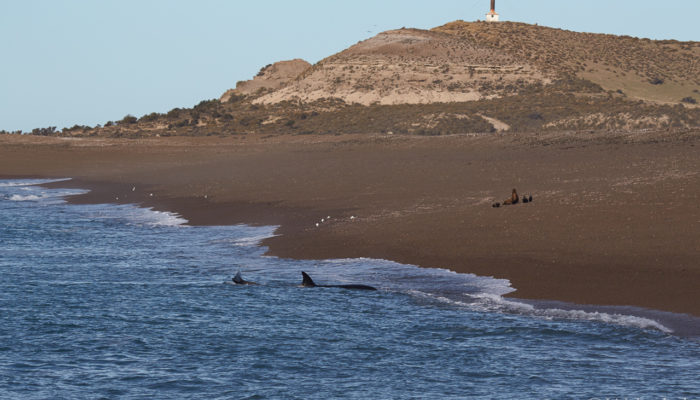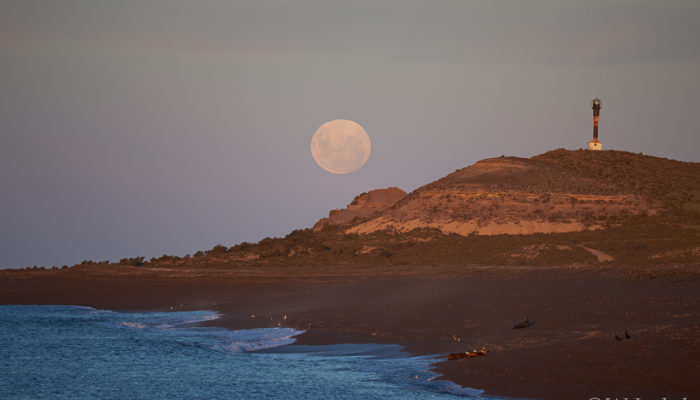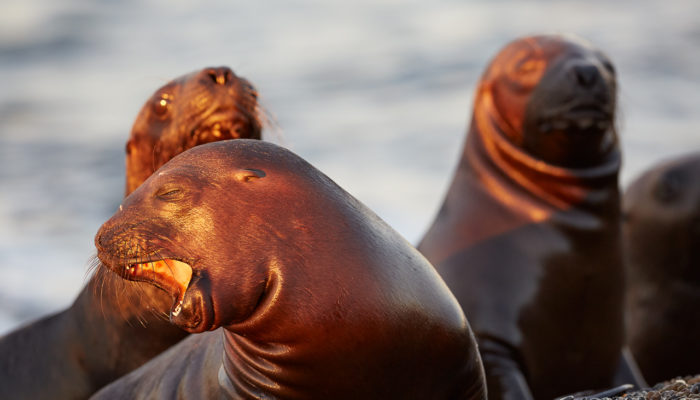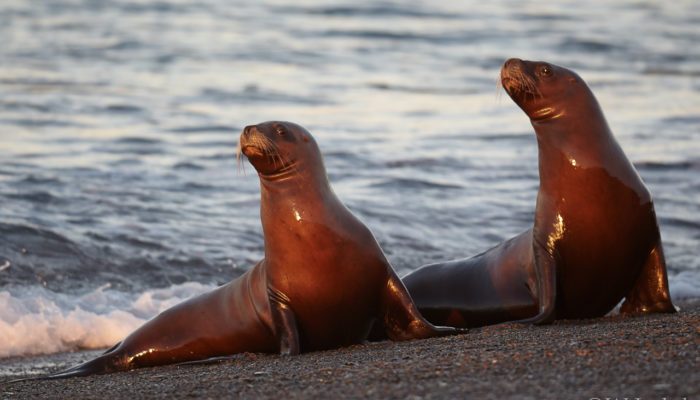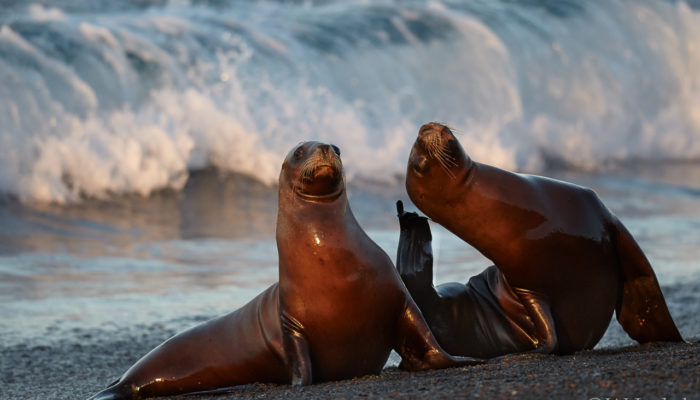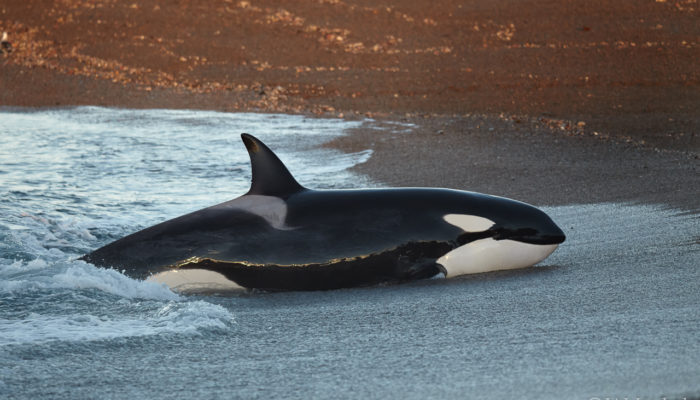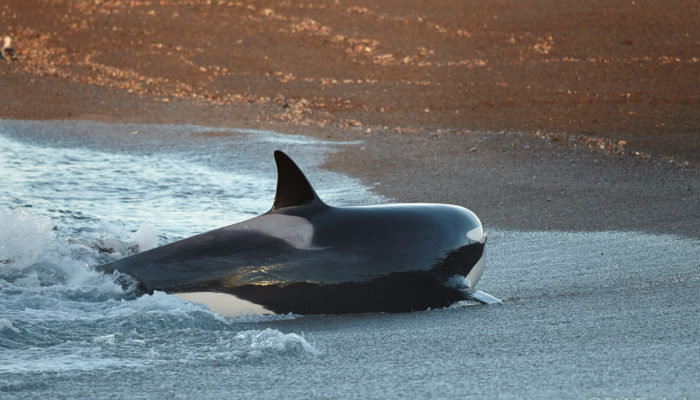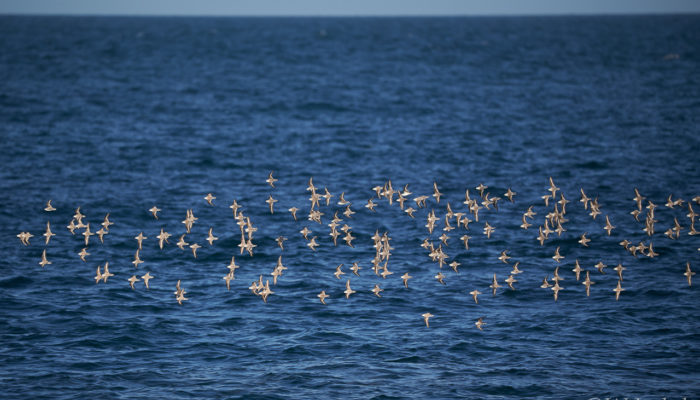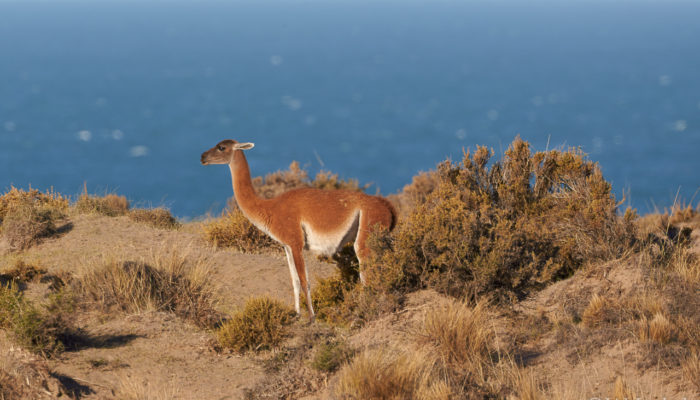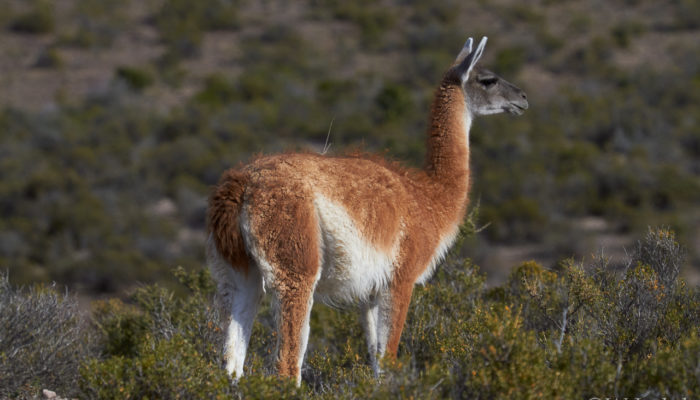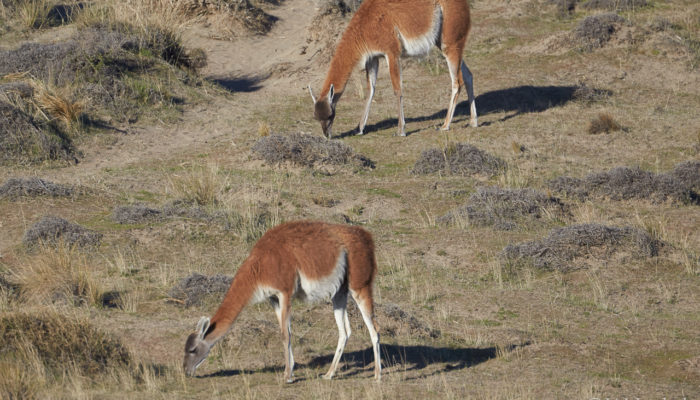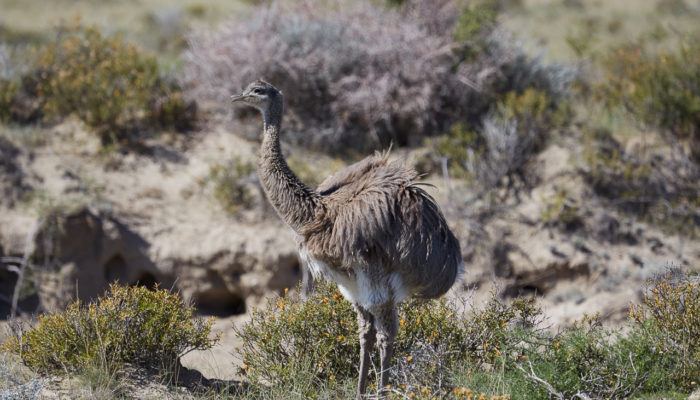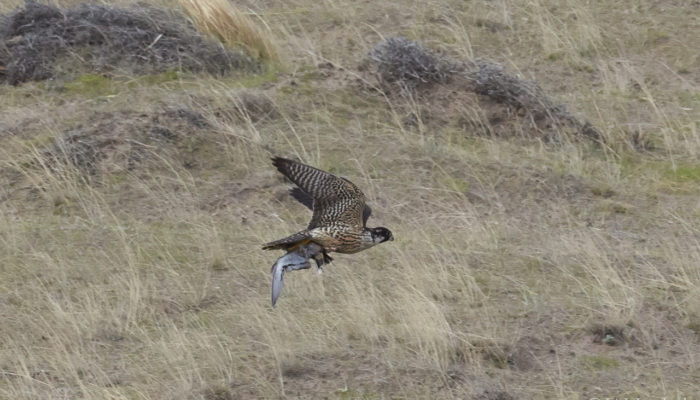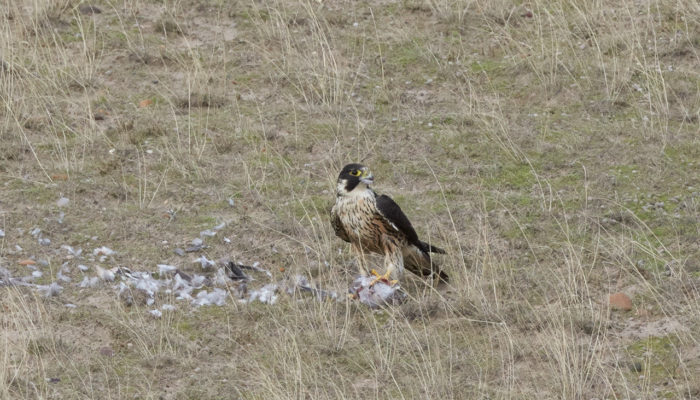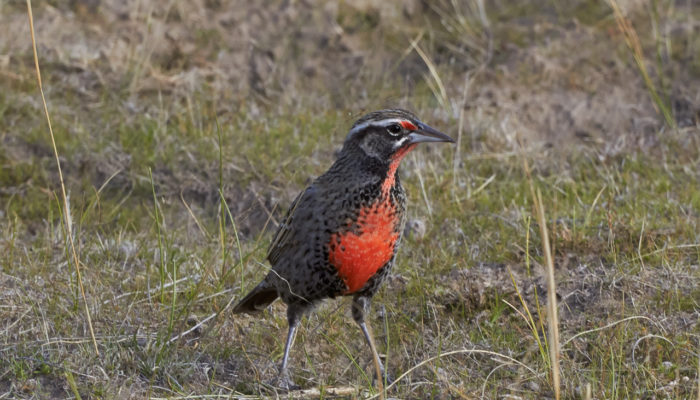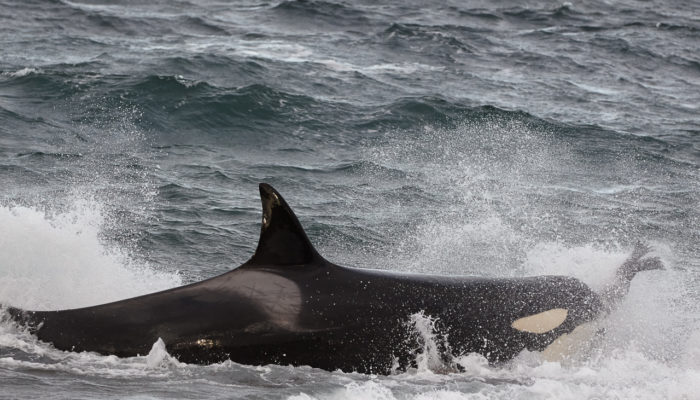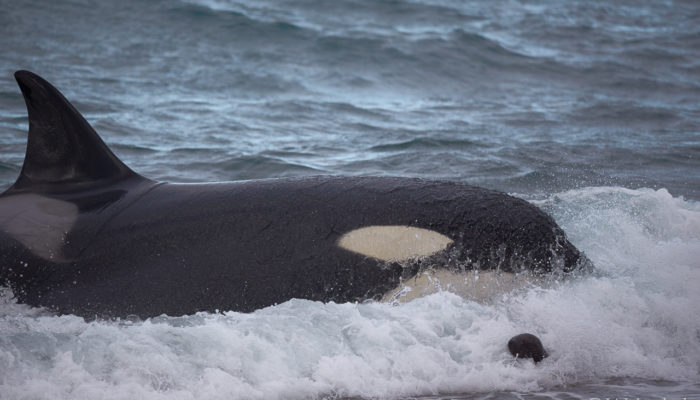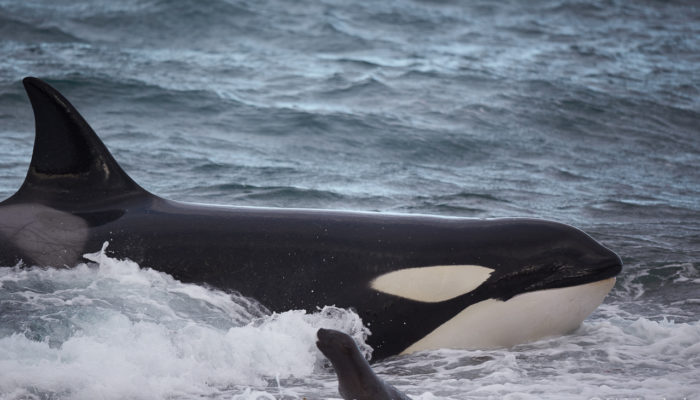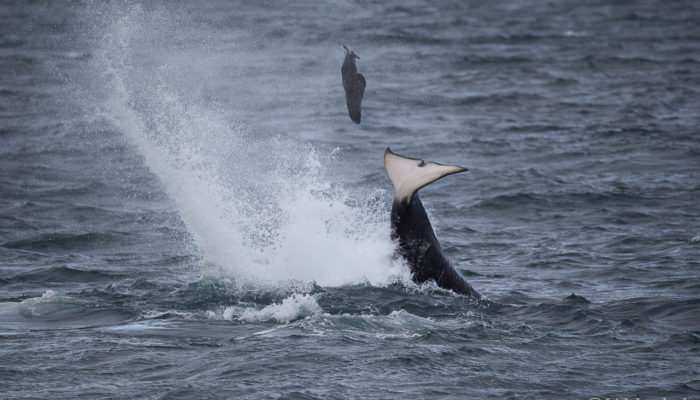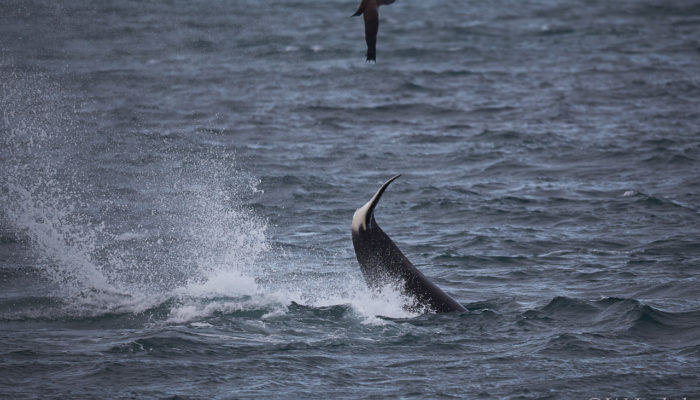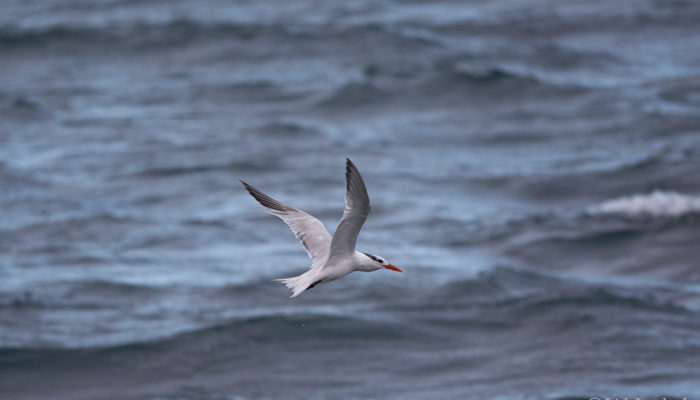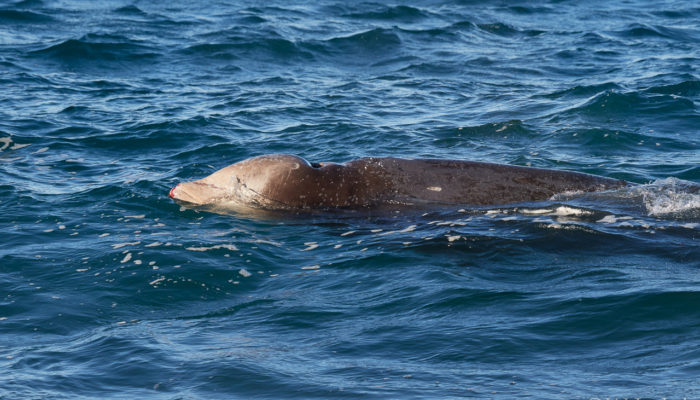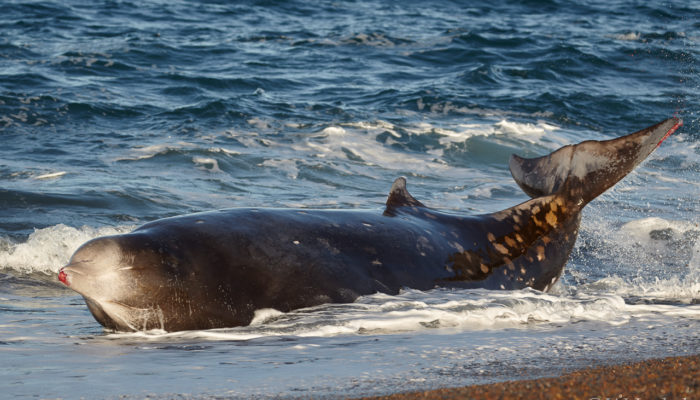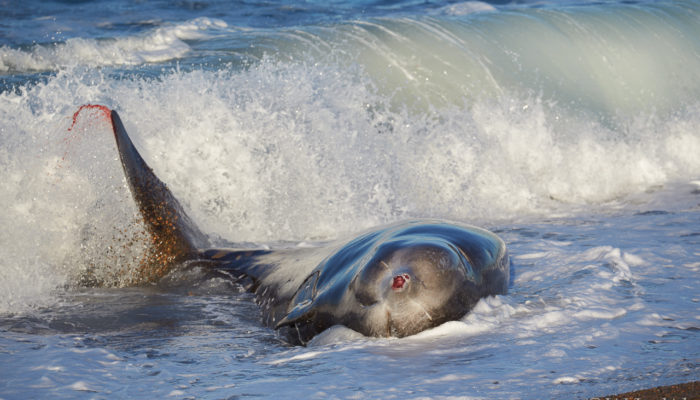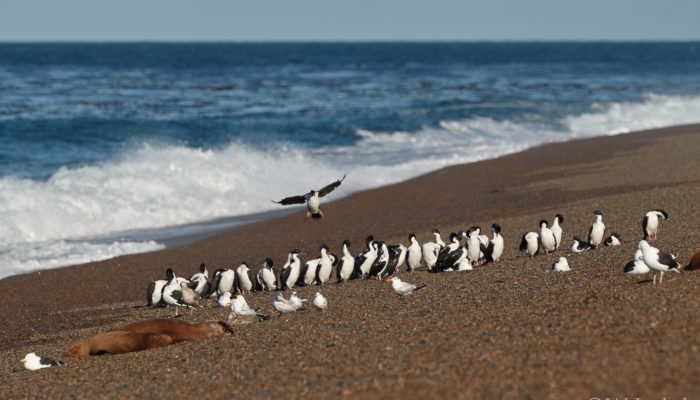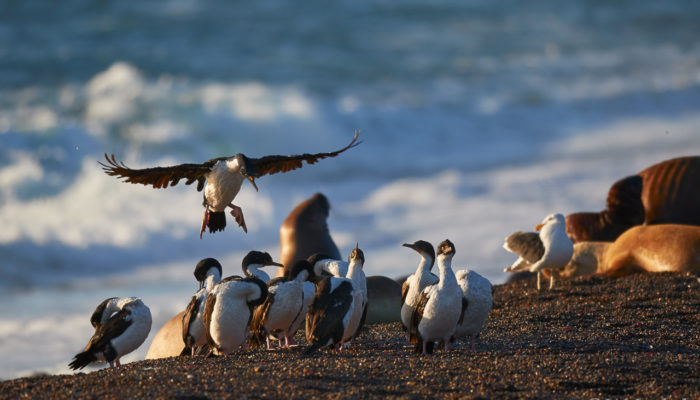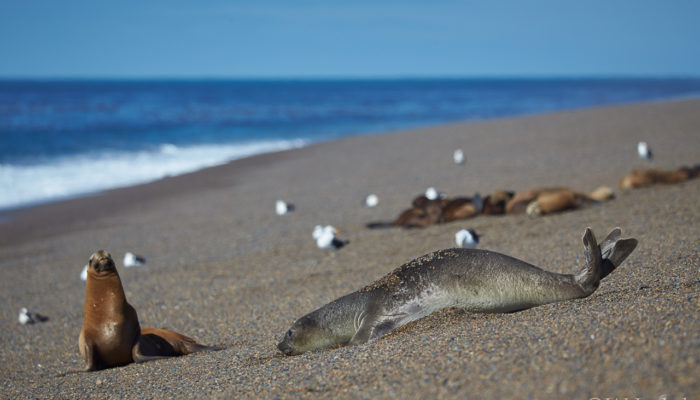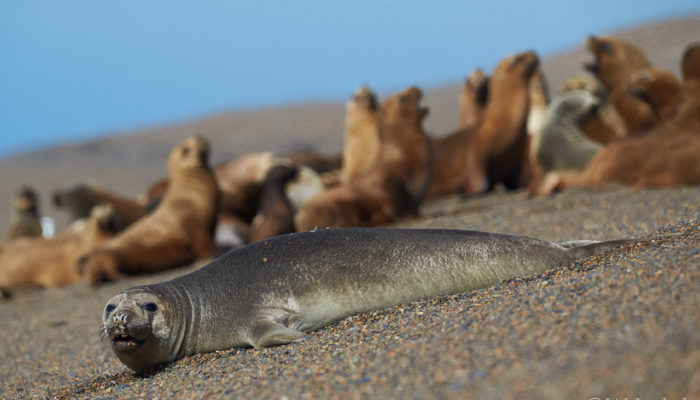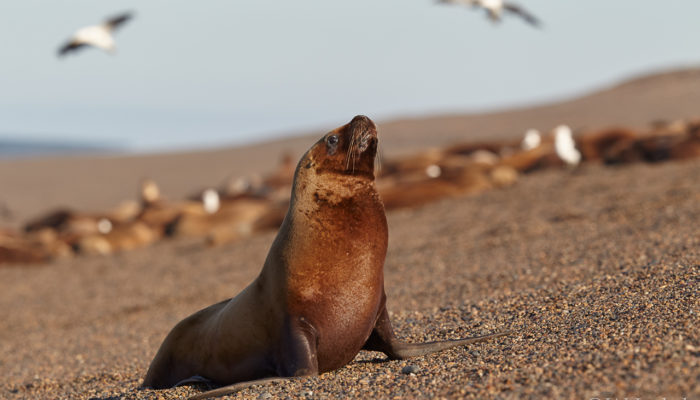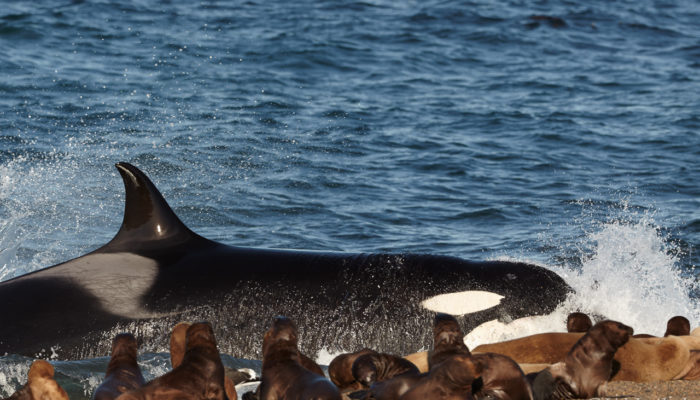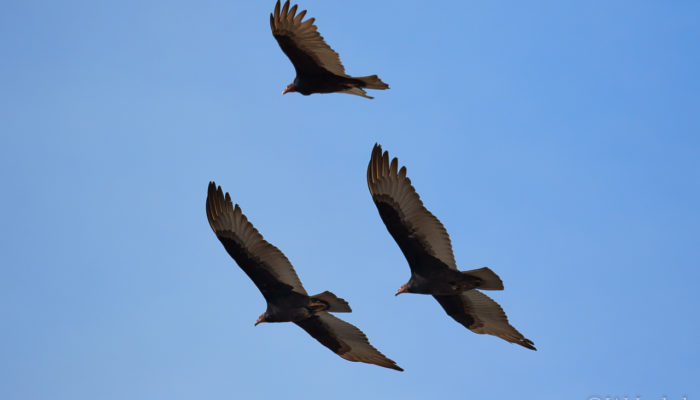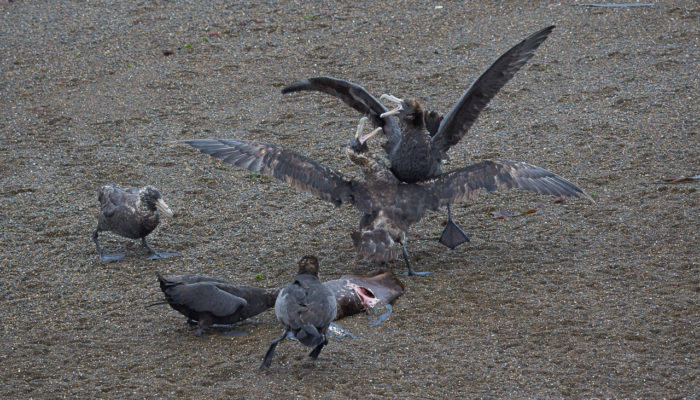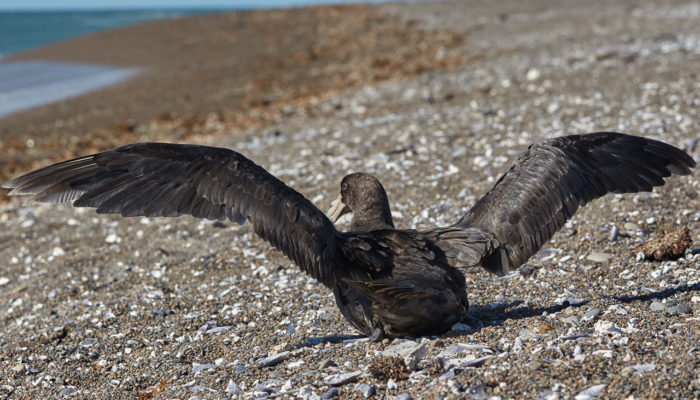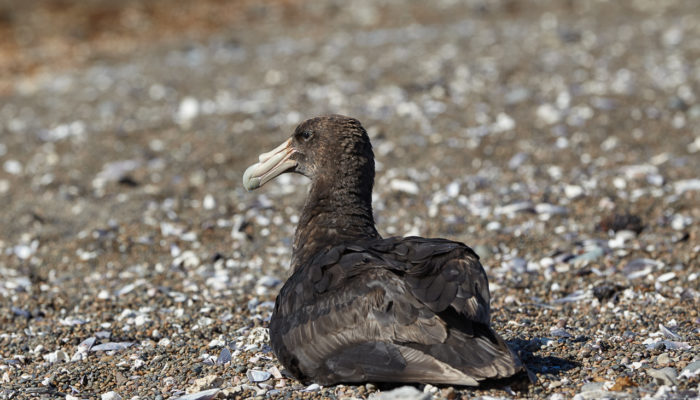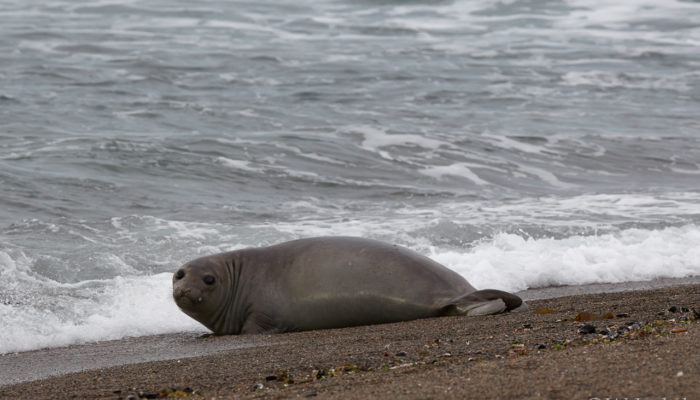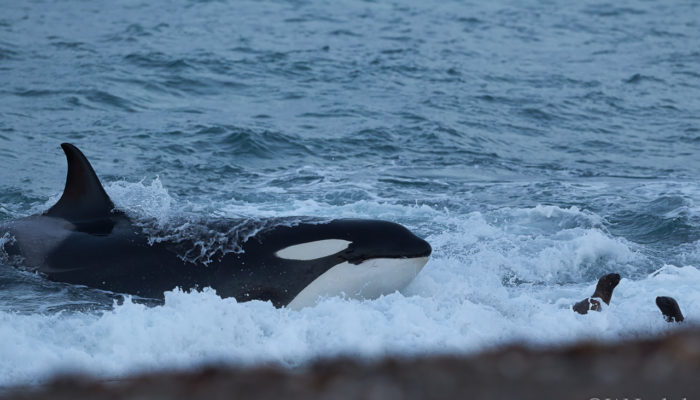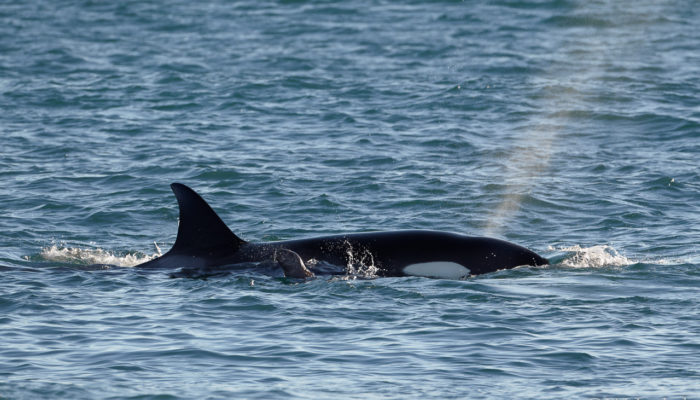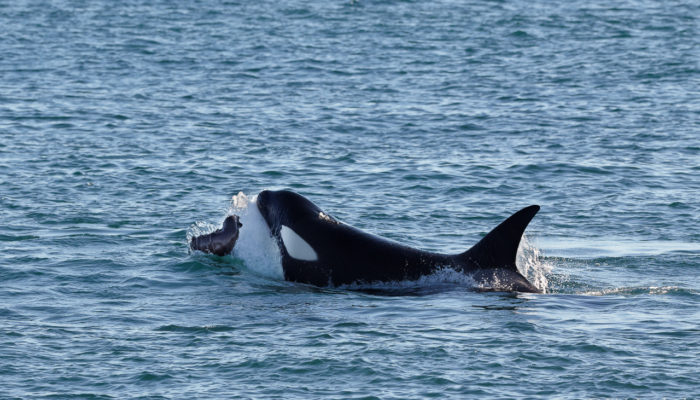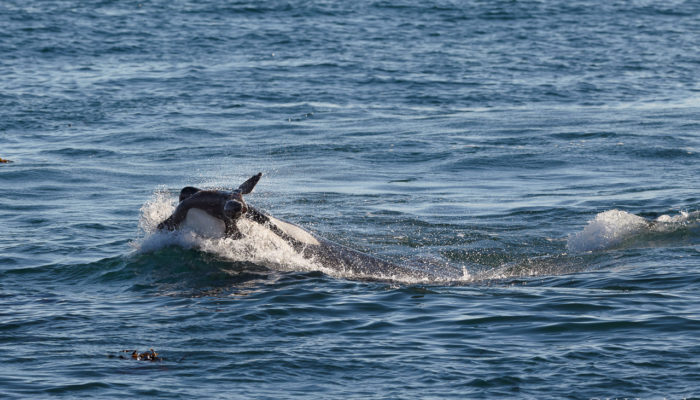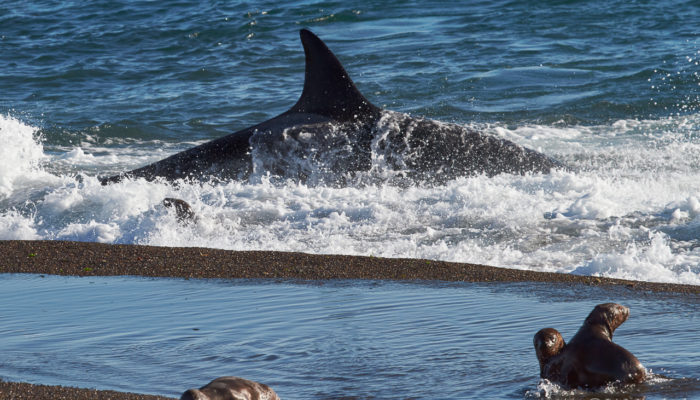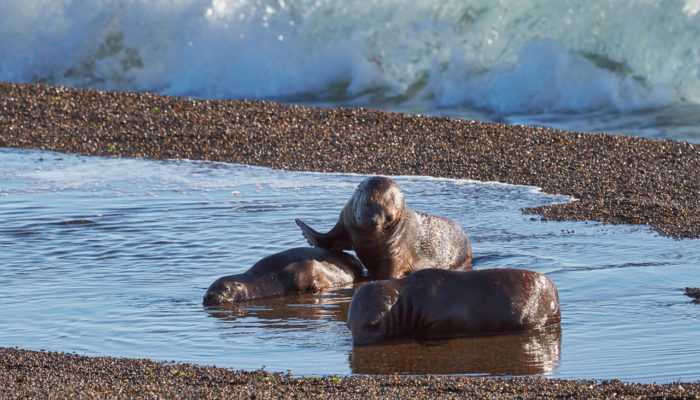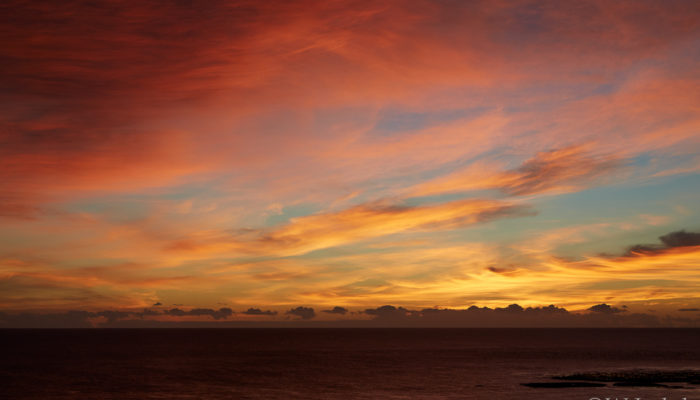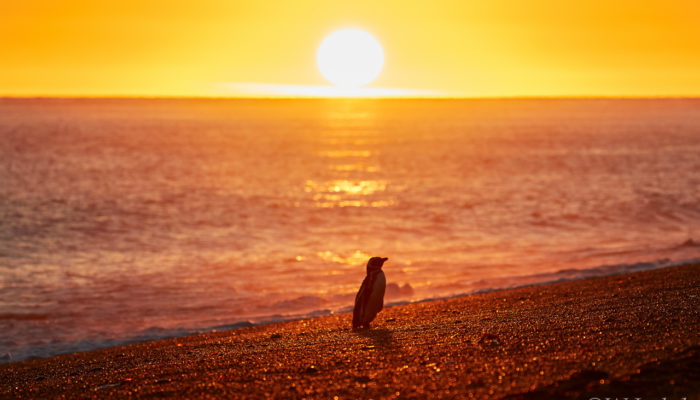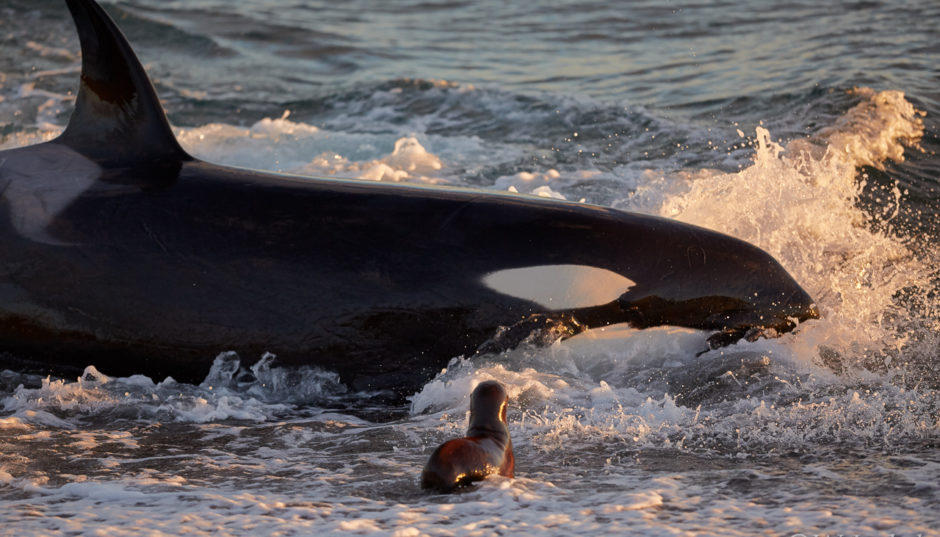
The Península Valdés, located in the northern stretch of the Patagonian coast in the Argentine province of Chubut, is world-famous for the most specialized and spectacular hunting strategy of orcas taking place during the reproductive period of the southern sea lions and elephant seals: the intentional stranding on the beach in order to capture incautious pups. The dominion of this hunting technique requires a prolonged period of instruction and training in juveniles which is carried out by the adults and passed on to the next generation. Each year, the same orca families are patrolling and scanning the coastline along the surf for inexperienced sea lion pups entering the water unaware of the danger. The orcas, commonly referred to as “killer whales”, actually are the largest members of the dolphin family and have a well- developed sense for hearing underwater to communicate and locate the echo of the pups playing in the swallow water of the beach by lifting and moving gravel on the ocean floor or swimming along the tidal line. They precisely attack them with incredible speed and accuracy by sometimes beaching themselves to capture their prey. That said, by no means all the members of the population practice and master this hunting method and are so-called stranders or beach hunters.
After their return to the open sea the orcas sometimes can be observed slapping their prey around or throwing it several meters into the air with powerful flaps of their fluke. Nature could appear heartless and what seems to be a ferocious and cruel show apparently is part of the learning and training process for the juveniles participating in a game of releasing and recapturing the prey before killing it and sharing the meal.
The overwhelming majority of photographs and documentaries of the amazing hunting and stranding orcas that had been published in the past show “Mel”, a large old male orca who was at the location every season and almost a guarantee for spectacular captures with 60 percent of success whenever he appeared. However, Mel was not seen again after 2011 so that some suppose that he might be dead given his age beyond 50 and thus reaching the high end of the life expectancy for a male orca. Moreover, Mel had a known jaw bone disease, too. Anyway, the chances of capturing the stranding behavior have become more unpredictable for photographers and film teams after Mel has disappeared.
Generally you patiently have to wait for many hours or even days in the right place for the orcas to appear and even if they are sighted this doesn’t necessarily mean that they’re in the mood for hunting. Tides, wind force and wind direction are important factors, too, since the orcas cannot locate the pups in the coastline under unfavorable conditions and will not risk to get trapped at the beach if the swell is too high. It also often happens that there are no pups in the water simultaneously or they have left in time if the alert adults become aware of the danger.
Beyond that, capturing perfect shots of the orca attacks certainly is one of the most challenging and demanding tasks in wildlife photography given the speed of the approach up to 55 mph and the spray of incoming waves partially covering the orca’s head during the final attack. Additionally, an unfavorable angle of the orca approach and the resulting light incidence as well as possible “obstacles” such as crossing and fleeing sea lions in the foreground can have a negative impact and prevent the shot desired.
One of the known places to see the orcas is Punta Norte, situated at the extreme northern tip of the Peninsula Valdes and only accessible by gravel road 78 kilometers from Puerto Pyramides.The area is open for the public and the base of the Ranger Station and PNOR staff that does a great job to photo-I.D the orcas, conduct research and protection. However, probably the world’s most renowned hunting beach situated at the distance of around 600m from the visitors area is an opening in the rock reef about 76 meters wide which is called the “Attack Channel”. During high tide the reef remains below the surface hiding the channel that is frequently crossed by sea lions as they move between the colonies, converting this place into one of the preferred attack sites for the orcas and their optional stranding. This is the location where most photographs and documentaries including those produced by the BBC and National Geographic were captured. The access to the Attack Channel is not allowed to the public but requires a special permit for photographers or film crews and oversight of a ranger. The extended areas north of the visitor center, around the lighthouse and south of the Attack Channel include more beaches that are favorite places for the orca attacks and very good photographic sites, too. They are private property and not accessible either for casual visitors unless you stay with the owner on his Estancia nearby and join his organized trips to the beaches.
Though the orcas are the main attraction there’s other wildlife to observe and to photograph in the area such as guanacos, rheas, lizards, armadillos, cavys, gray foxes, maras – as well as herons, magellanic penguins in their moulting season, blue-eyed shags, royal terns, giant petrels, owls, peregrine falcons, buzzards and several species of songbirds. During my recent stay we could also witness and photograph the stranding of a Cuvier’s beakon whale which obviously was disorientated and finally could be pushed back into the sea with the combined strengths of man and waves.
I’ve been privileged to visit the Peninsula Valdes 4 times between 2012 and 2016 in order to capture the spectacular hunting method of the orcas which included numerous days and countless hours of patiently waiting, of course. The gallery shows a limited selection of my photographs I took in the Attack Channel as well as on the private beaches mentioned above and public viewpoints. Over time the orca shots and other wildlife mostly were captured with the 200-400mm/f4 L IS USM + 1,4Ext, 300mm /f2.8L IS USM and 100-400mm/ f4.5-5.6 L IS II USM on Canon 1Dx, 1D Mark IV and 7d Mark II cameras. Occasionally the 600mm /f4L IS II USM or 500mm /f4 L IS USM was used, too. The scenery and general motifs were photographed with the 24-70mm /f2.8 L USM II and 70-200mm/f 2.8L USM II on 5d Mark III or 1Ds Mark III bodies.
I hope that I can return to this amazing place to further improve and extend the output of my orca photographs.


